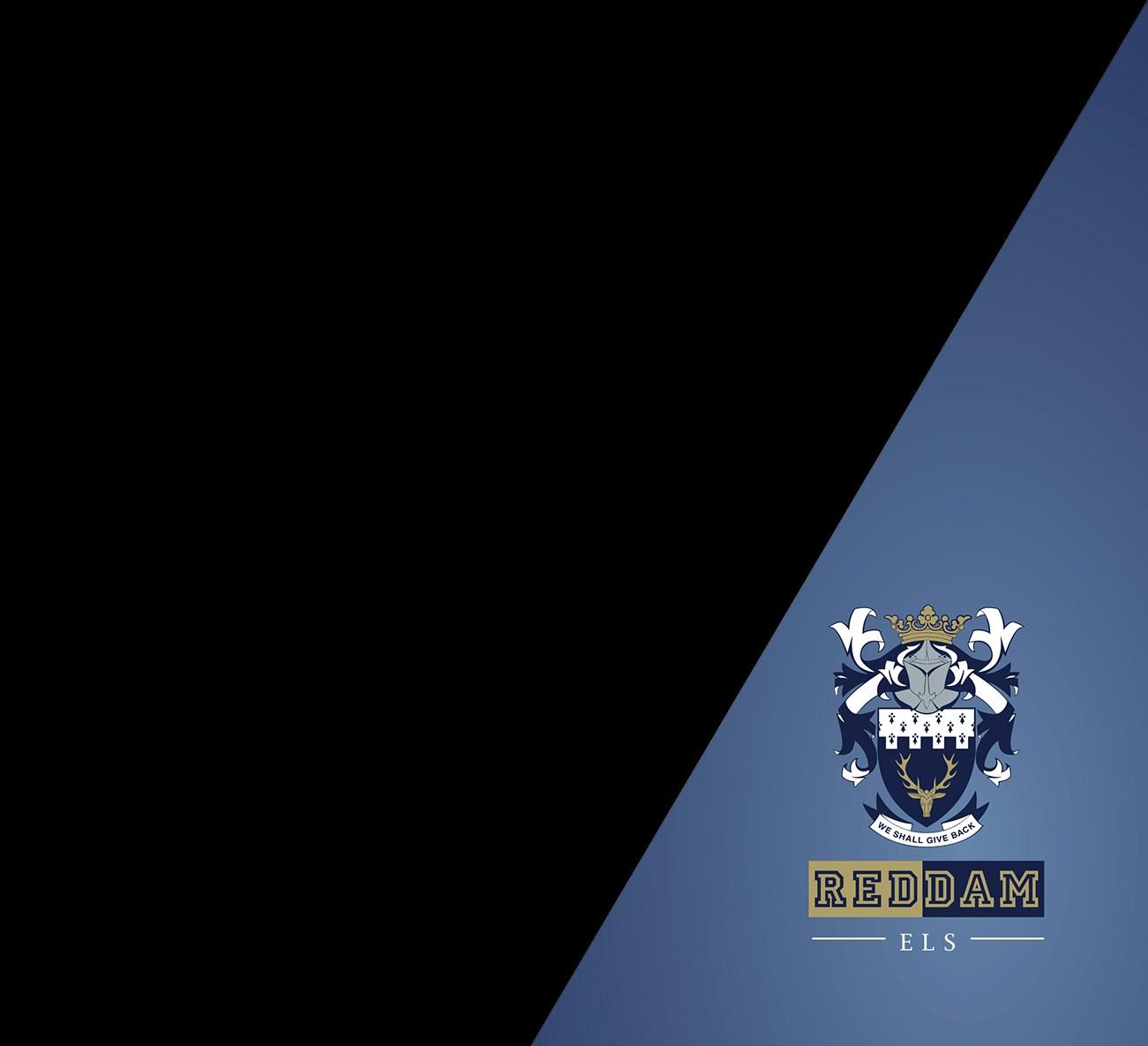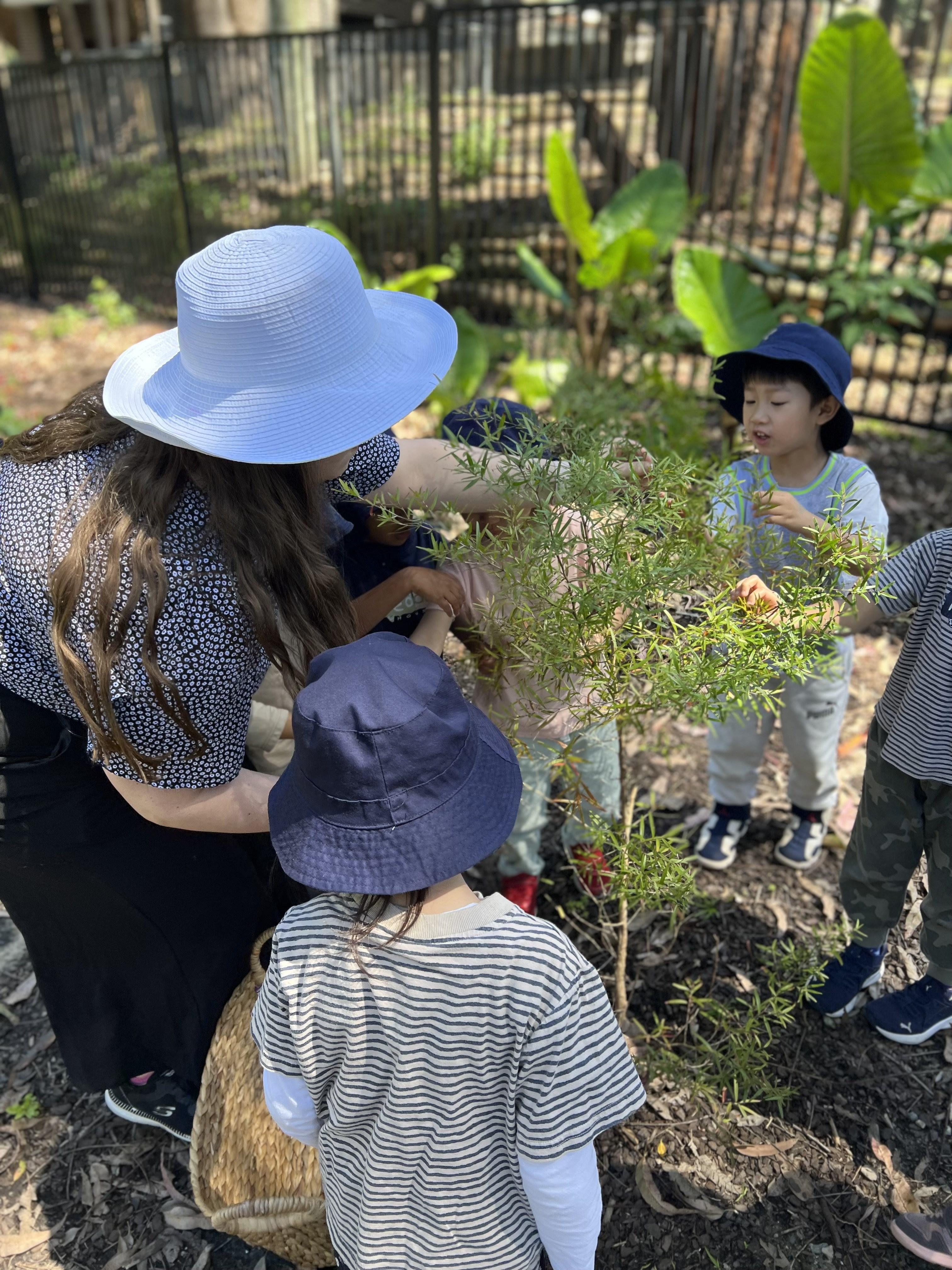Principal’s Message Continued...
By Chrsitine Irwin
Reddam ELS policy on Sun protection is based on recommendations from SunSmart NSW and the Cancer Council NSW. A brief summary of our sun protection includes:
Outdoor activities are now minimised between 11am and 3pm Sunscreen (30+) is to be applied to children before they arrive at the school Sunscreen will be applied to the children at school 20 minutes before going outdoors and reapplied every 2 hours
Children, where possible are encouraged to apply their own sunscreen.
Sun safe clothing is to be worn at all times by staff and children including shirts that cover the shoulders and broad brim hats.
Educators are expected to act as role models by wearing Sun safe clothing, applying sunscreen, wearing broad brim hat, and wearing sunglasses
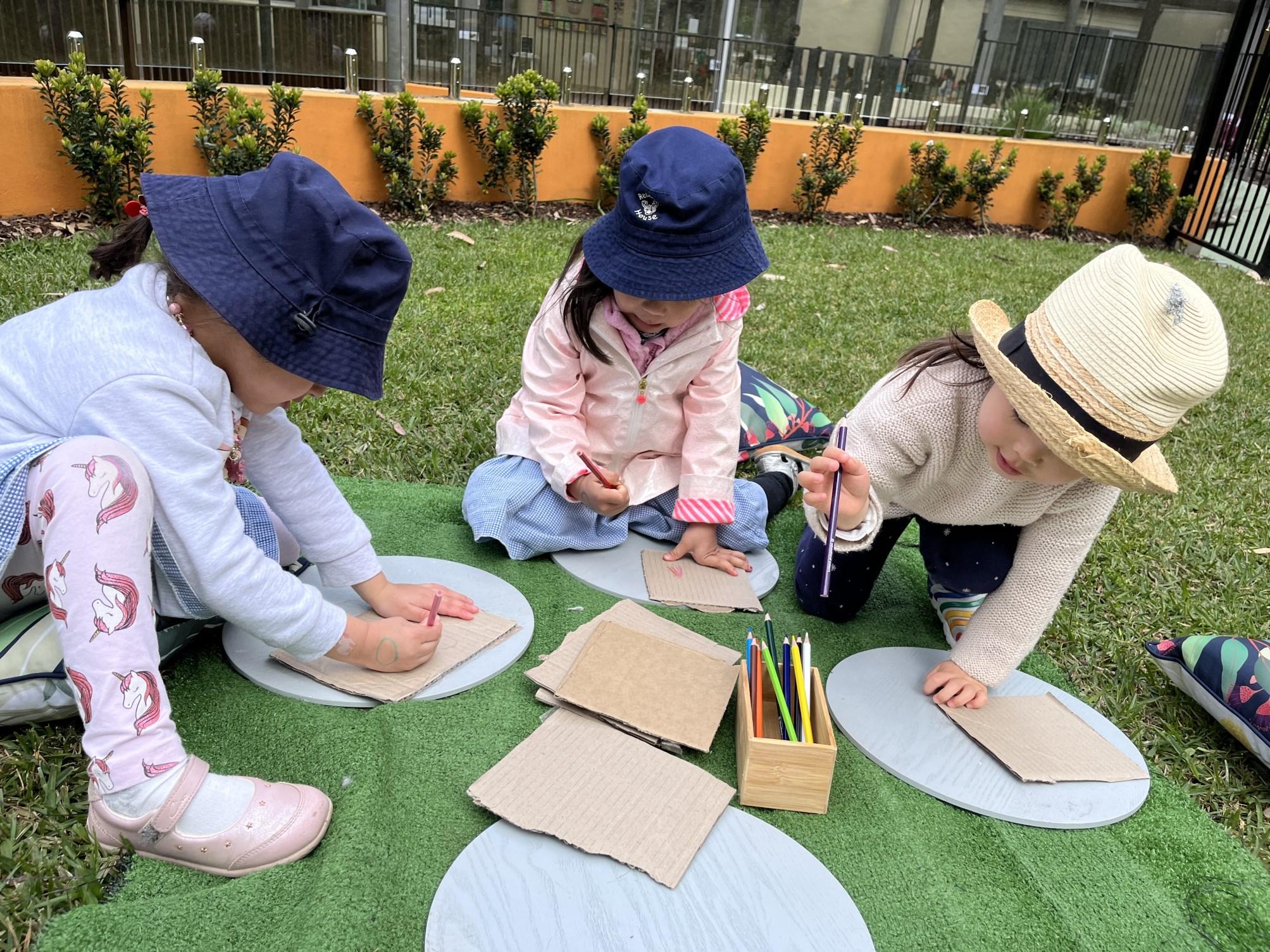
Outdoor experiences will be planned in shaded areas
In extreme conditions mealtimes will be conducted indoors
Checking the UV ratings daily
Reminders
Graduation and Christmas Concert
Dates have been tentatively booked for our Graduation and Christmas concerts
Tuesday 6th December 2022 9:30am 4E
Wednesday 7th December 2022 3pm 3E
Thursday 8th December 2022 9:30am 4R
Tuesday 13th December 2022 3pm 2E
Tuesday 13th December 2022 3pm 1R
Wednesday 14th December 3pm 1E
Thursday 15th December 3pm 2R
Friday 16th December 3pm 3R
Please be aware that these dates and times are subject to change and will be confirmed by mid November 2022
2023 enrolments
Recently an email was sent to all families regarding 2023 enrolments. The date for changes to 2023 booking has closed so new offerings will be sent to new families. If you have any questions or queries regarding 2023 please email Chenise ASAP at enrol.lindfield@reddamels.com.au
Looking forward to chatting with you soon.
Christin Irwin Principal
2
By Heather Gaskall
A slippery fish, a slippery fish swimming in the water. A slippery fish, a slippery fish swimming in the water. Glup. Glup. Glup. He was eaten by an Octopus……..
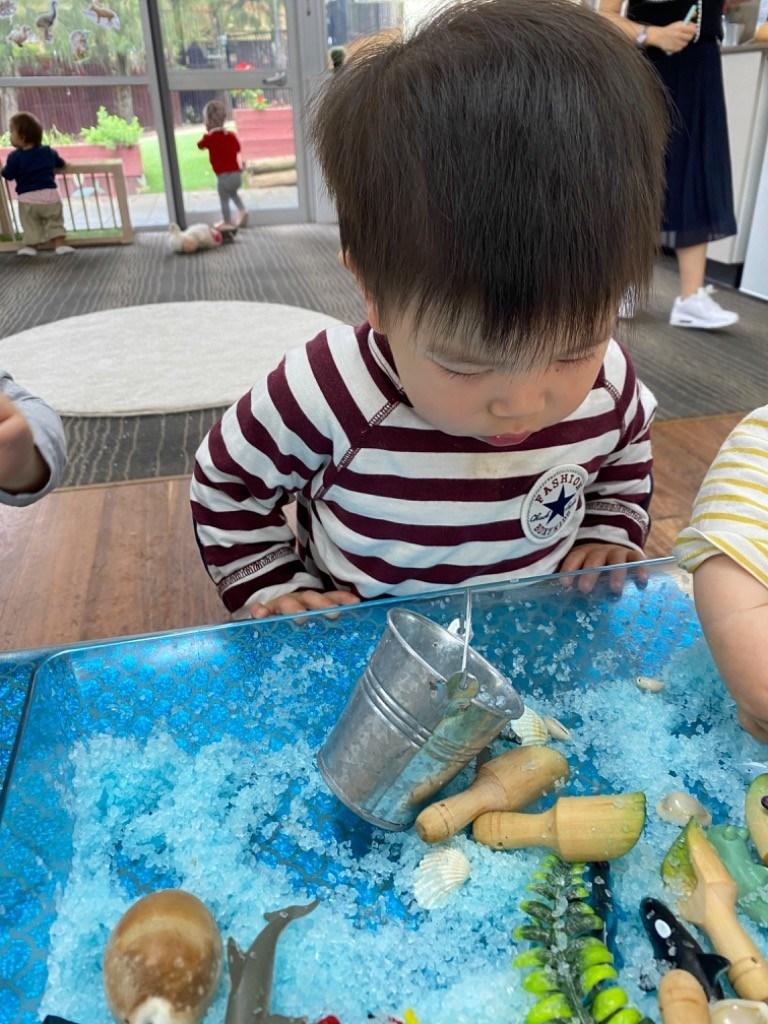
Have you heard this song this week? It has been echoing all around our room this week and the children have loved it. We have had humongous whales and tuna fish floating around the room delighting the children all week.
It has been a colourful and exciting week of sensory play for the children who have plunged their little hands into seaweed coloured spaghetti searching for hidden fish during one of our sensory experiences. Another of our experiences offered the children a chance to navigate a sensory tray of oobleck (mixture of cornstarch and water) . This substance is a non Newtonian fluid which can change between liquid and a solid and the children find this a very interesting substance to touch and see that happening before their very eyes.
We have offered the children many different ways to learn and enhance their under the sea experiences, like sea life sensory bags. In a ziplock bag we placed some gel, glitter and sea animals for the children to manipulate and discover. Through this interaction we also reinforced their knowledge of some common sea animals such as dolphins, sharks, whales and turtles. Another activity involved magnetic fishing rods so the children could catch the magnetic sea animals. This activity helped their eye hand coordination as they dangled the rod over the sea animal waiting for the magnets to connect. Then to help with their fine motor skills, the children were presented with sea creatures which had become entangled in pollution (pipe cleaners) from the sea. The children untangled the beautiful sea creatures allowing them to swim off and enjoy their lives. This was also an opportunity to converse with the children about caring for our planet and how every action has consequences.
The children's work this week has had them very busy creating their own idea of sea life. They were provided with choices of coloured fish and sea creatures. They then used their fine motor skills to spread glue onto their blue paper (representing the sea) followed by adding their fish and sea creatures. To finish off their masterpieces the children could sprinkle some sand on making a lovely home for their fish.
Next week, we will be learning about animals with jobs like rescue dogs or therapy animals and the most favourite of all farm animals.
Wishing all our families a wonderful weekend
Stage 1R
3
"In one drop of water are found all the secrets of all the oceans." (Kahlil Giban)
Heather, Doris, Jenny, Jaycel and Ona
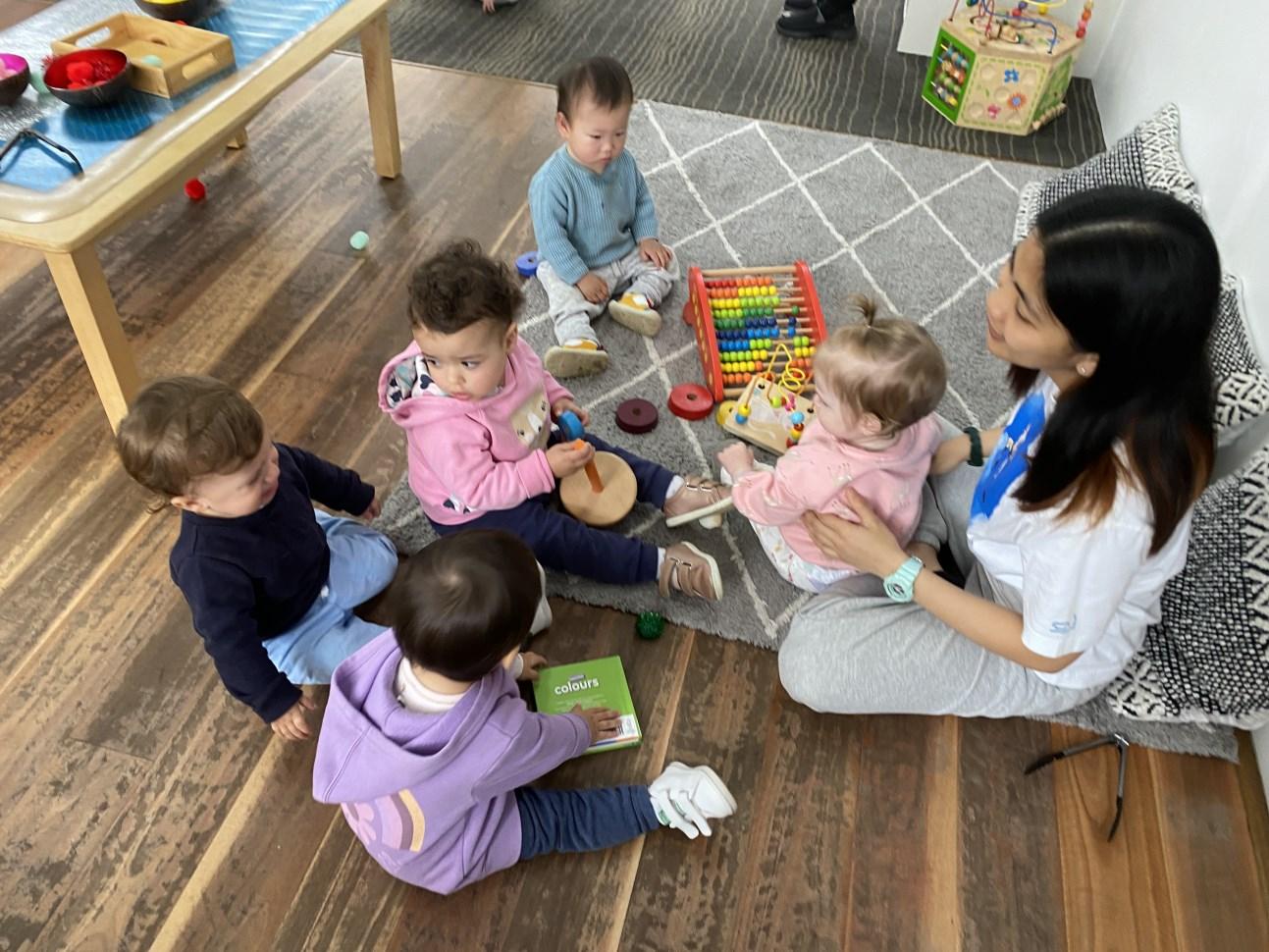
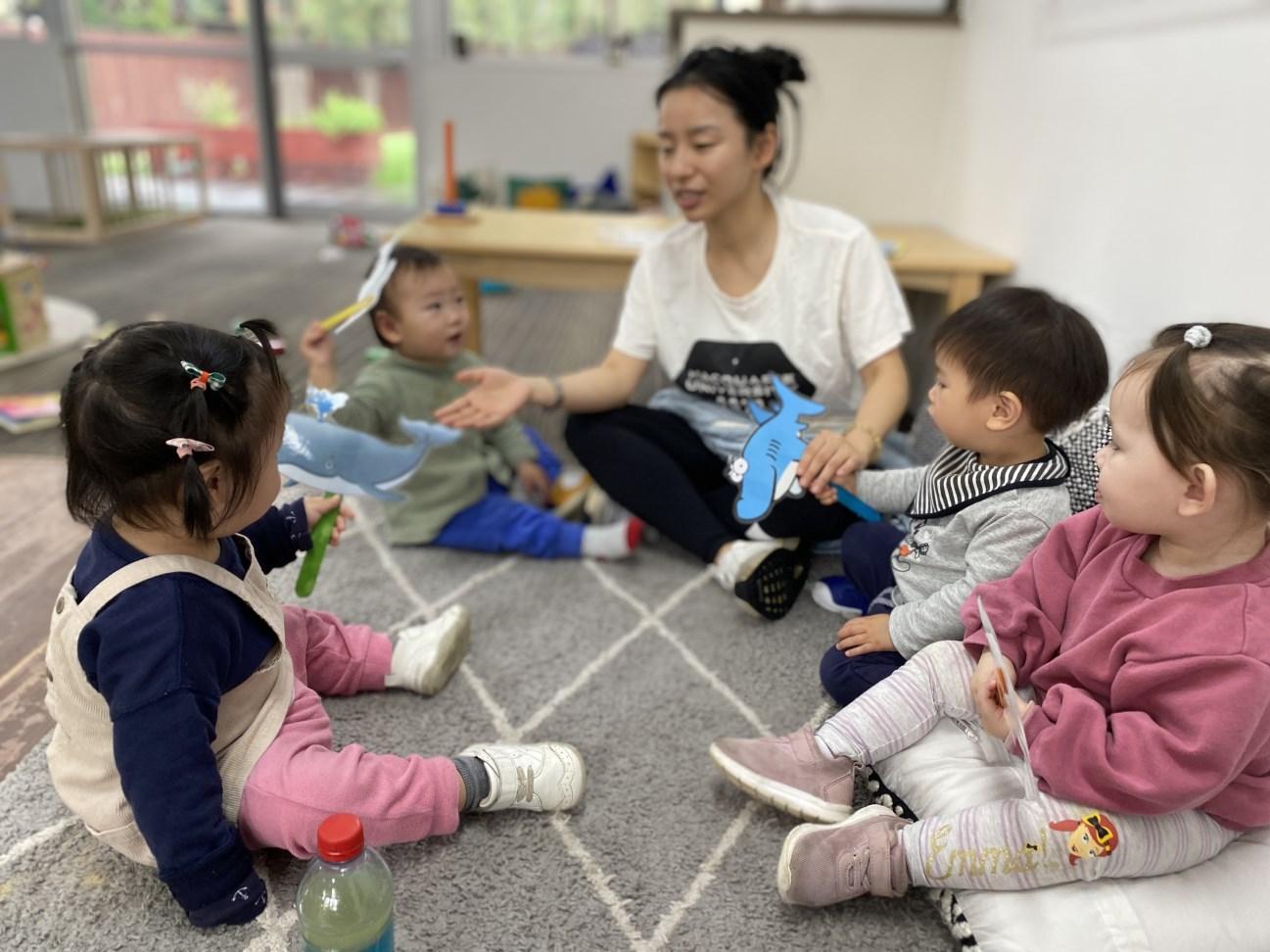
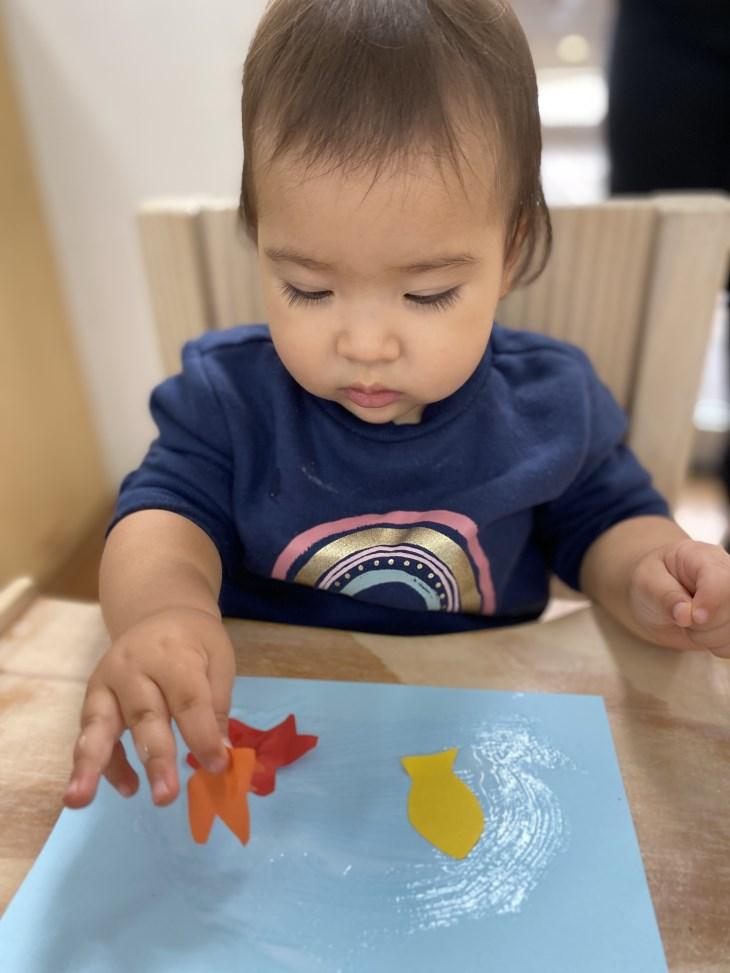
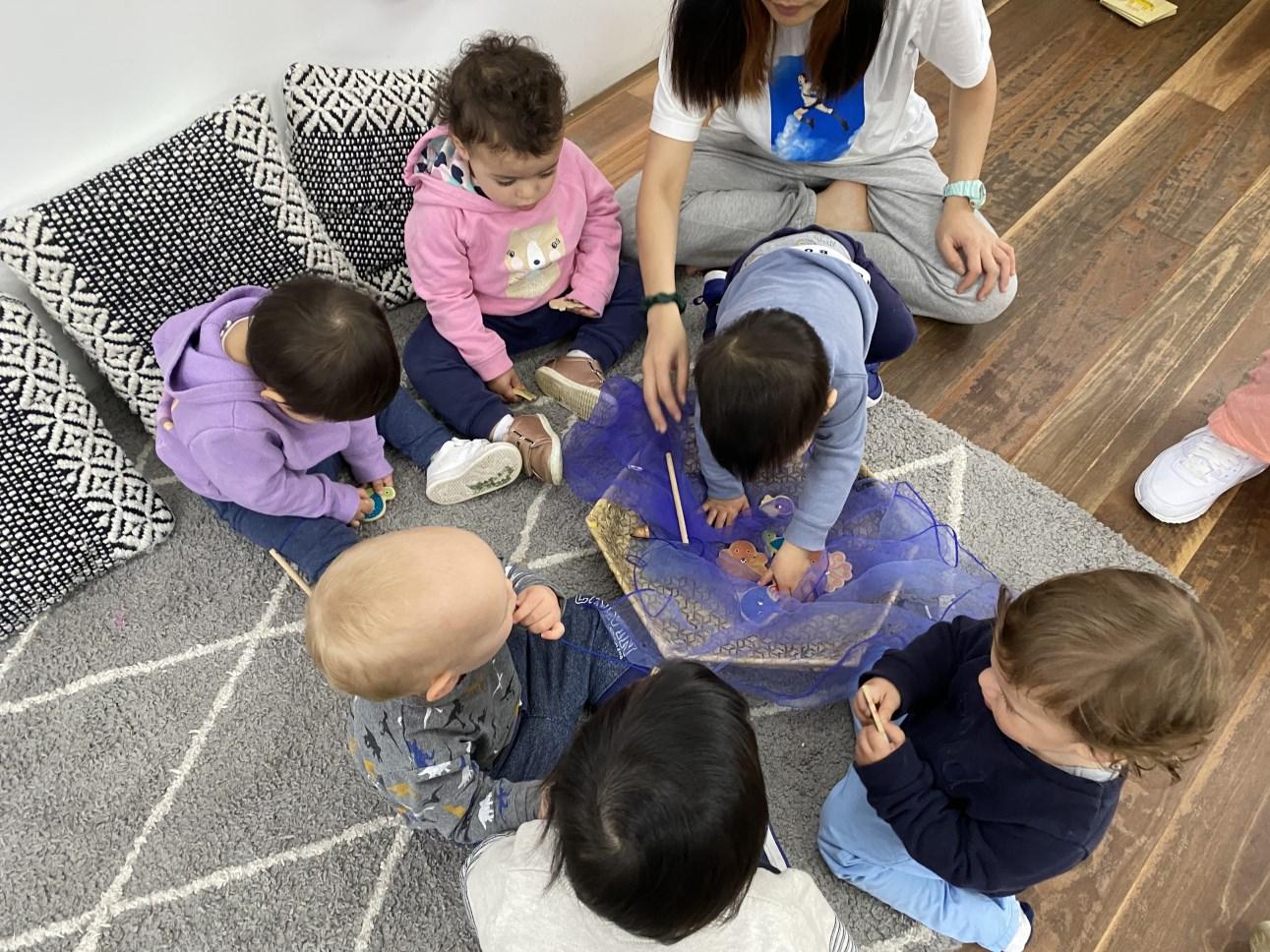
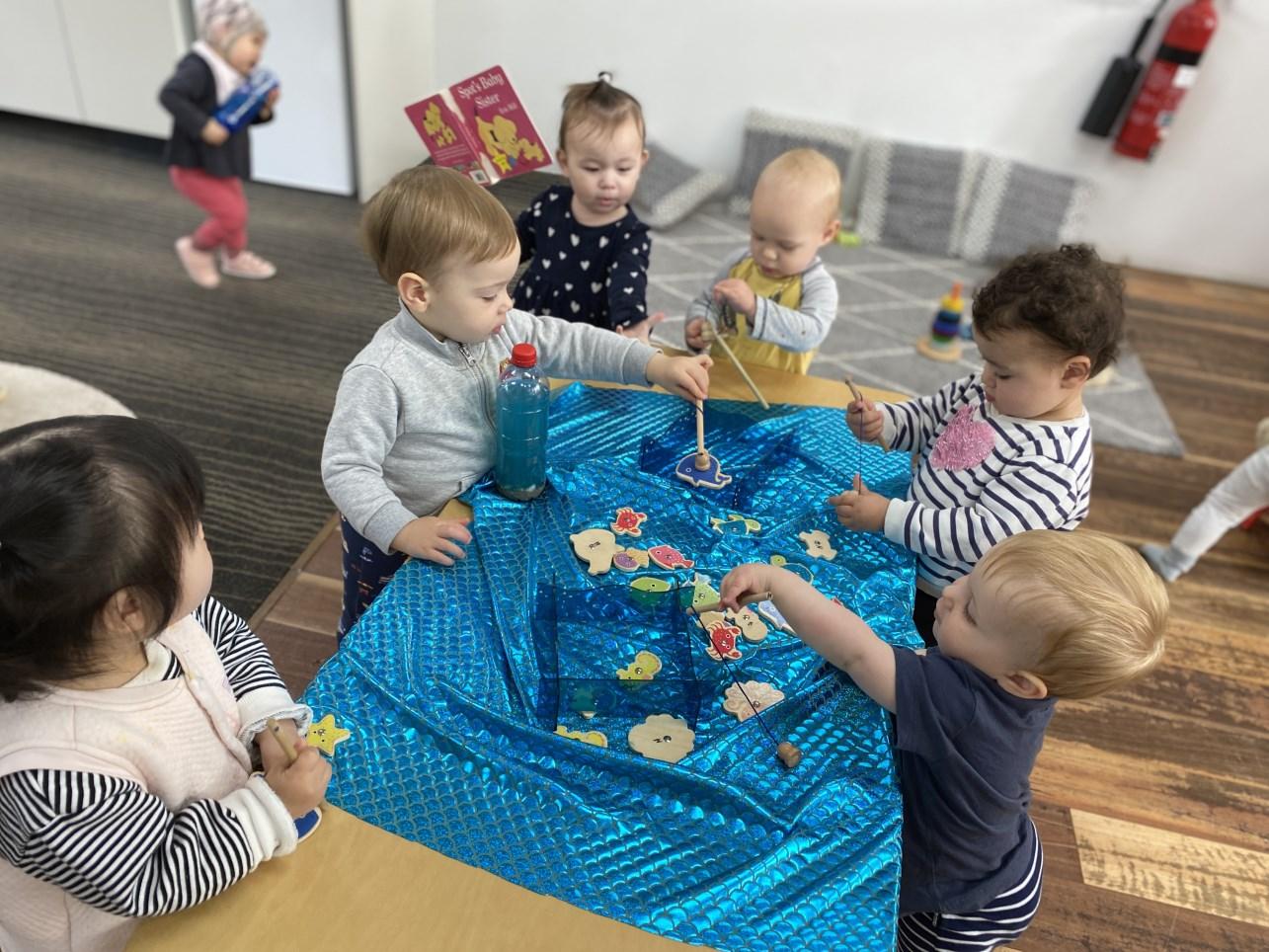
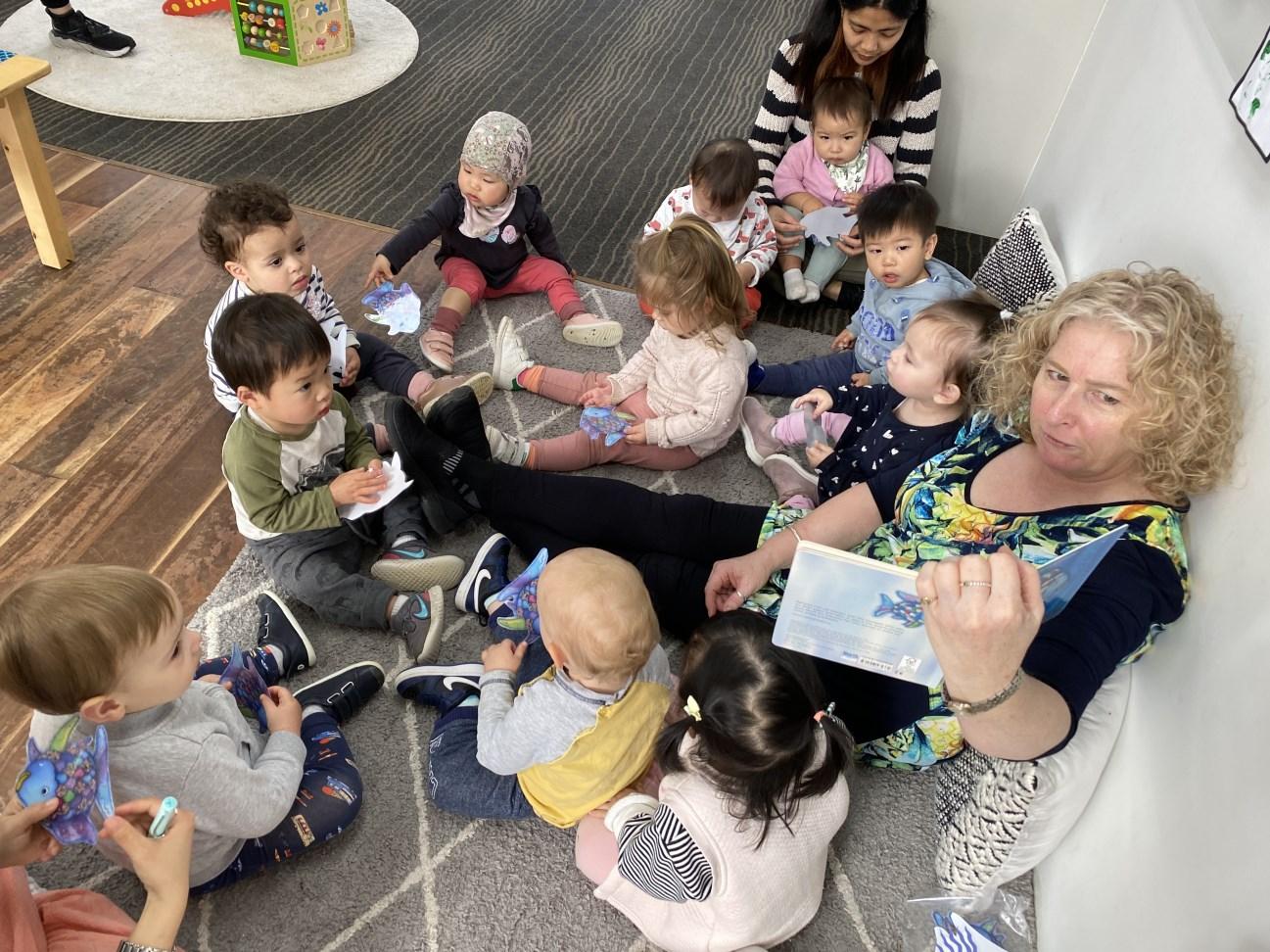
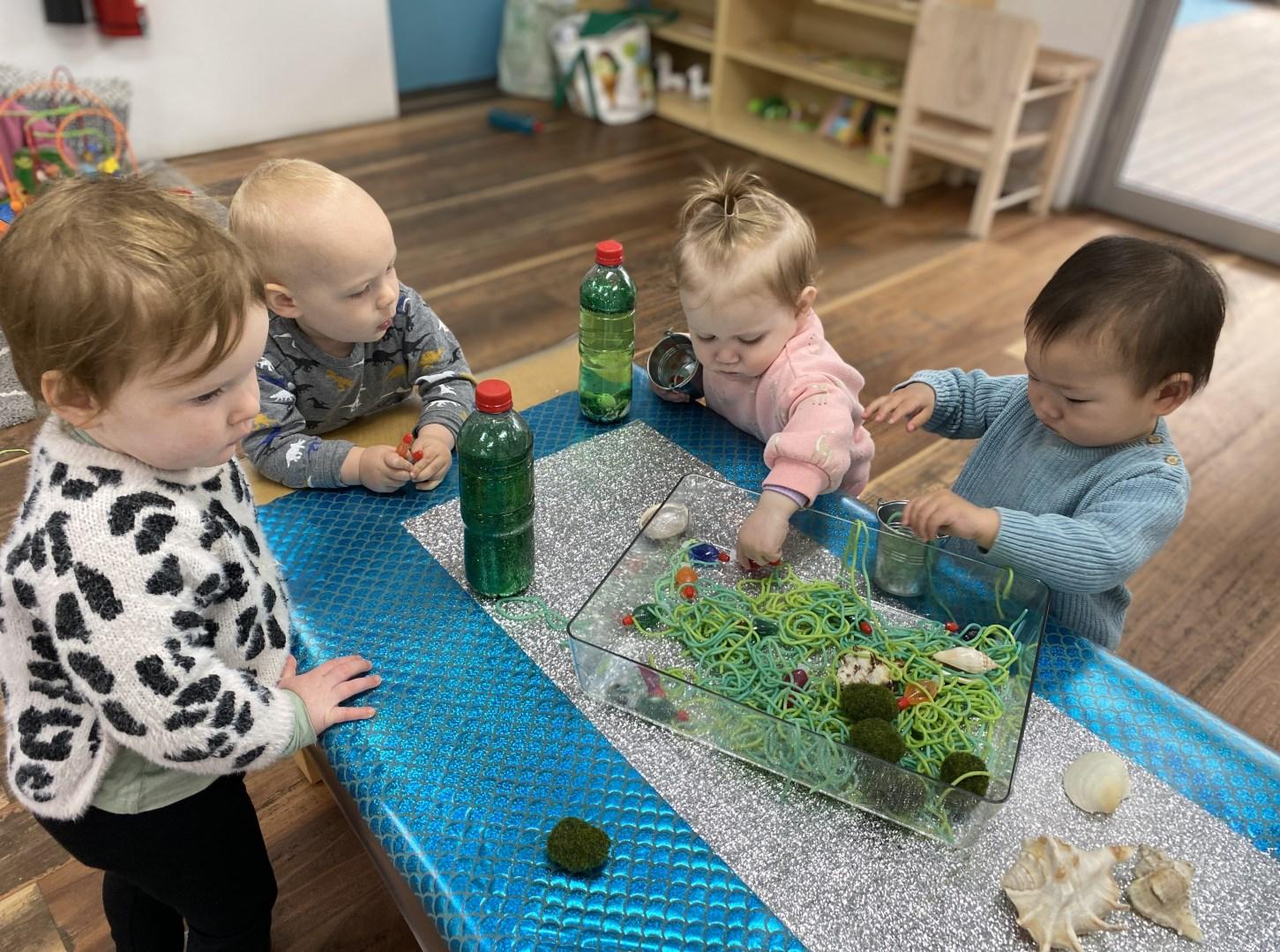

4 Stage 1R:
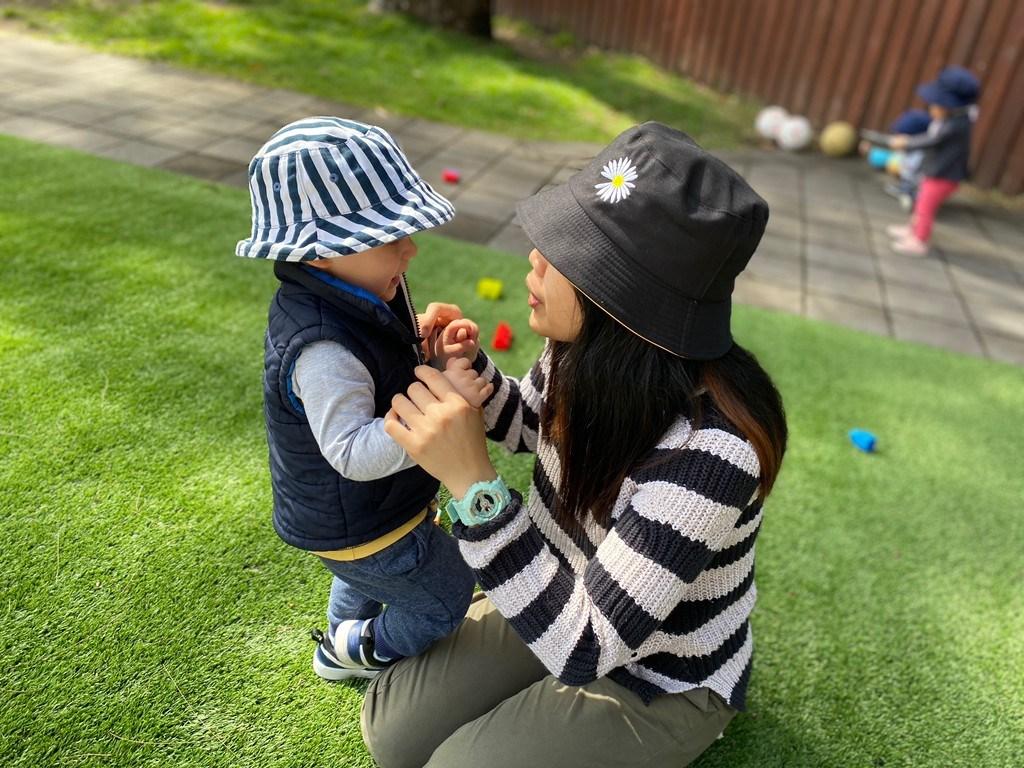
5 Stage 1R:
By Charity Acera
Studies show that language development and literacy is no doubt a critical part of any child’s overall development. It supports the ability of your child to communicate and express and understand feelings. It also supports your child’s cognitive skills and helps them develop and maintain relationships. True to the quote, it is through the child’s speech and language that they learn to understand the world.
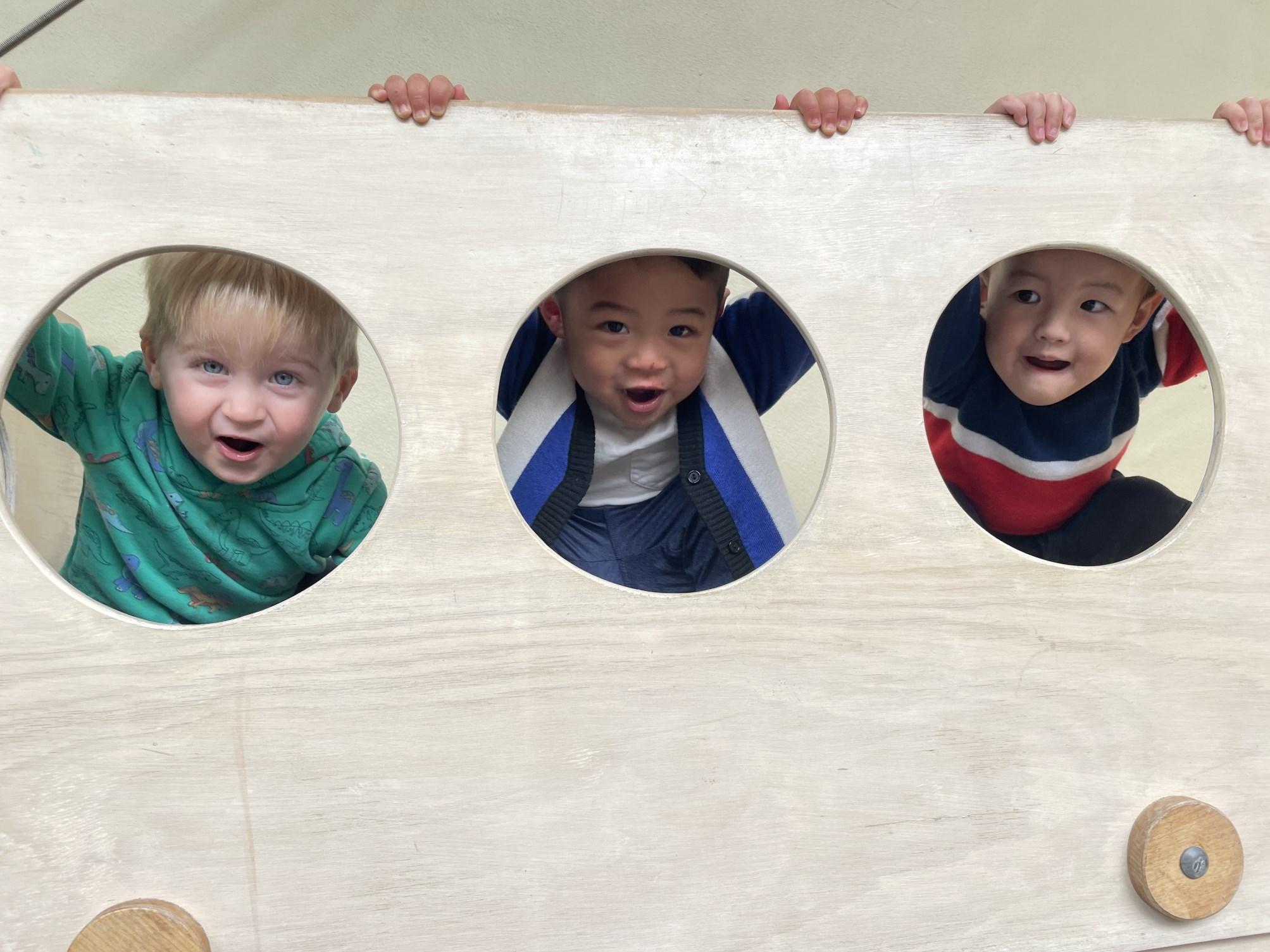
This week, 1E focused around these crucial developmental milestones through participating in various activities such as vocabulary building using visual cues of the body parts, phonological awareness using wooden and magnetic alphabets, and we also supported them to note similarities and differences between sizes, texture and colour using natural materials like flowers, leaves and gumnut seeds. Another experience encouraged them to play with play dough and use coloured plastic balls to increase more of their verbal counting and colour identification skills. This activity also encouraged them to practice turn taking skills and sharing the play space with their peers as they all enjoyed their learning.
Artwork time was filled with creativity with our little artists. They were given black cardboards to show their art skills using oil pastel. The colourful lines and shapes that they draw were really highlighted in contrast with the dark background. Likewise, they also scribbled on recycled cardboard during their free time. Children develop skills that will improve their writing expression and reflection by using art as an early form of communication. It also helps them to develop their visual and verbal creativity.
Our week has been really productive and informative as our learners start to take a step forward in their language and communication development. As their stewards for learning and well being, we will continuously guide and teach them and ensure that they will develop holistically.
Next week’s theme will be focusing on building their cognitive learning skills. Puzzles, problem solving and investigation are just a few of the things that we will enjoy.
May everyone have a restful weekend
Charity, May, Resie, Rowel, Mary and Yash
Stage 1E
6
“The child begins to perceive the world not only through his eyes but also through his speech.” (Lev Vygotsky)
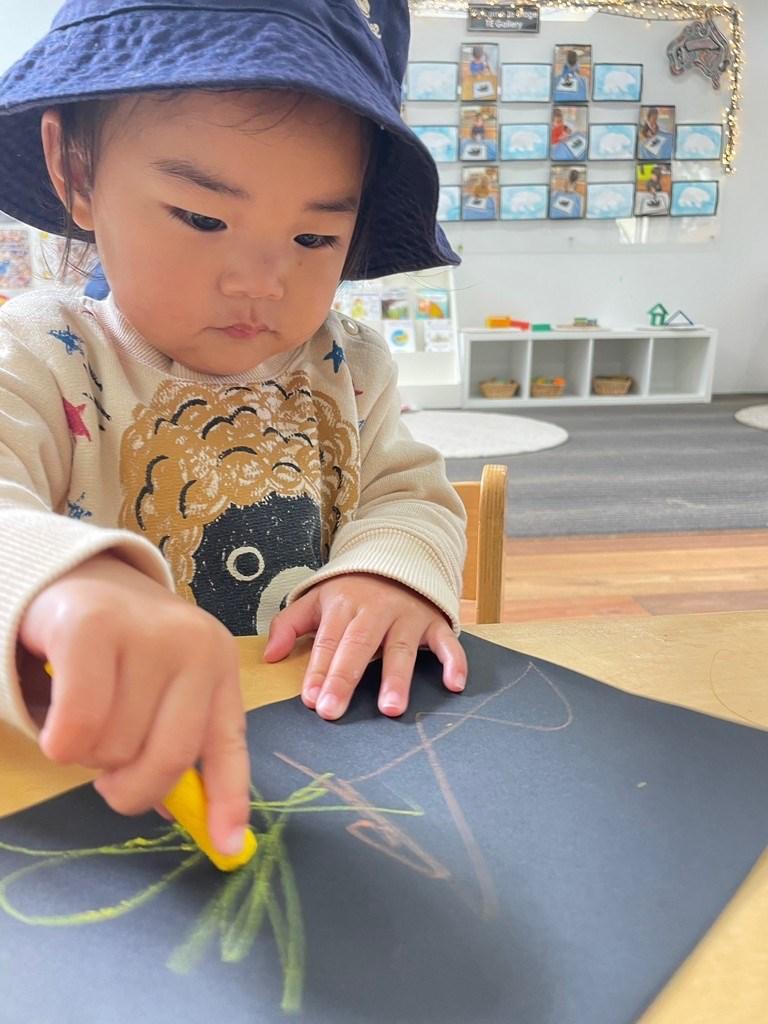

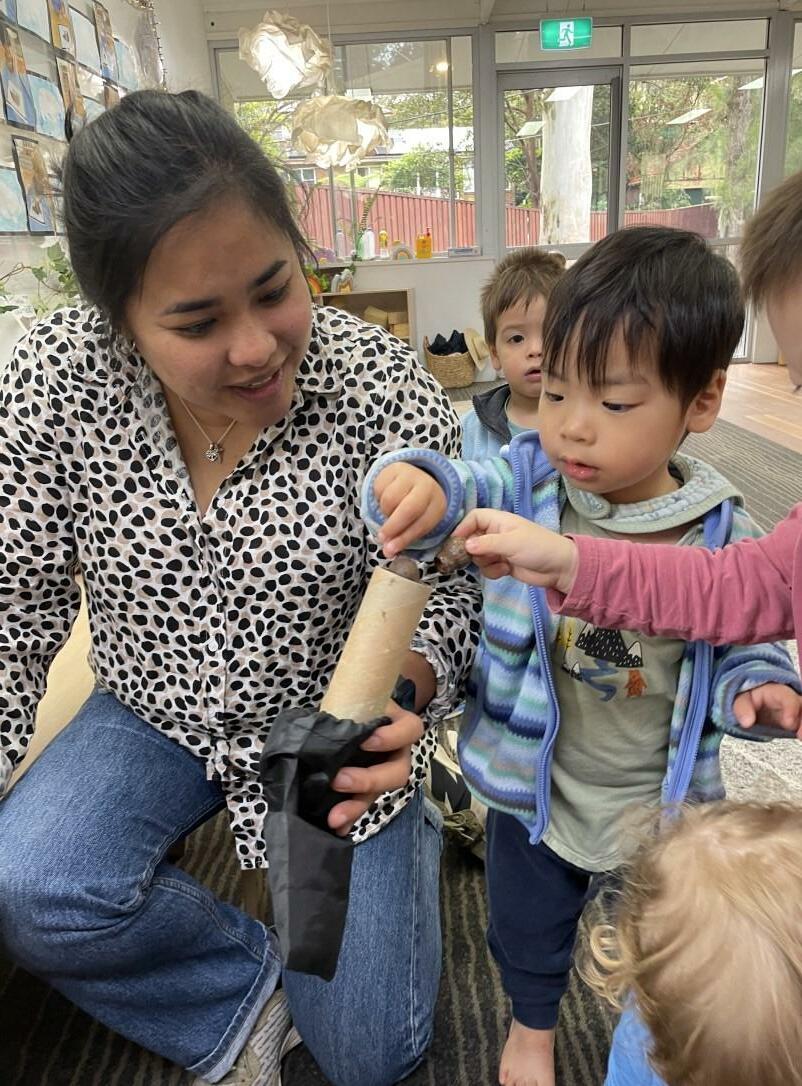
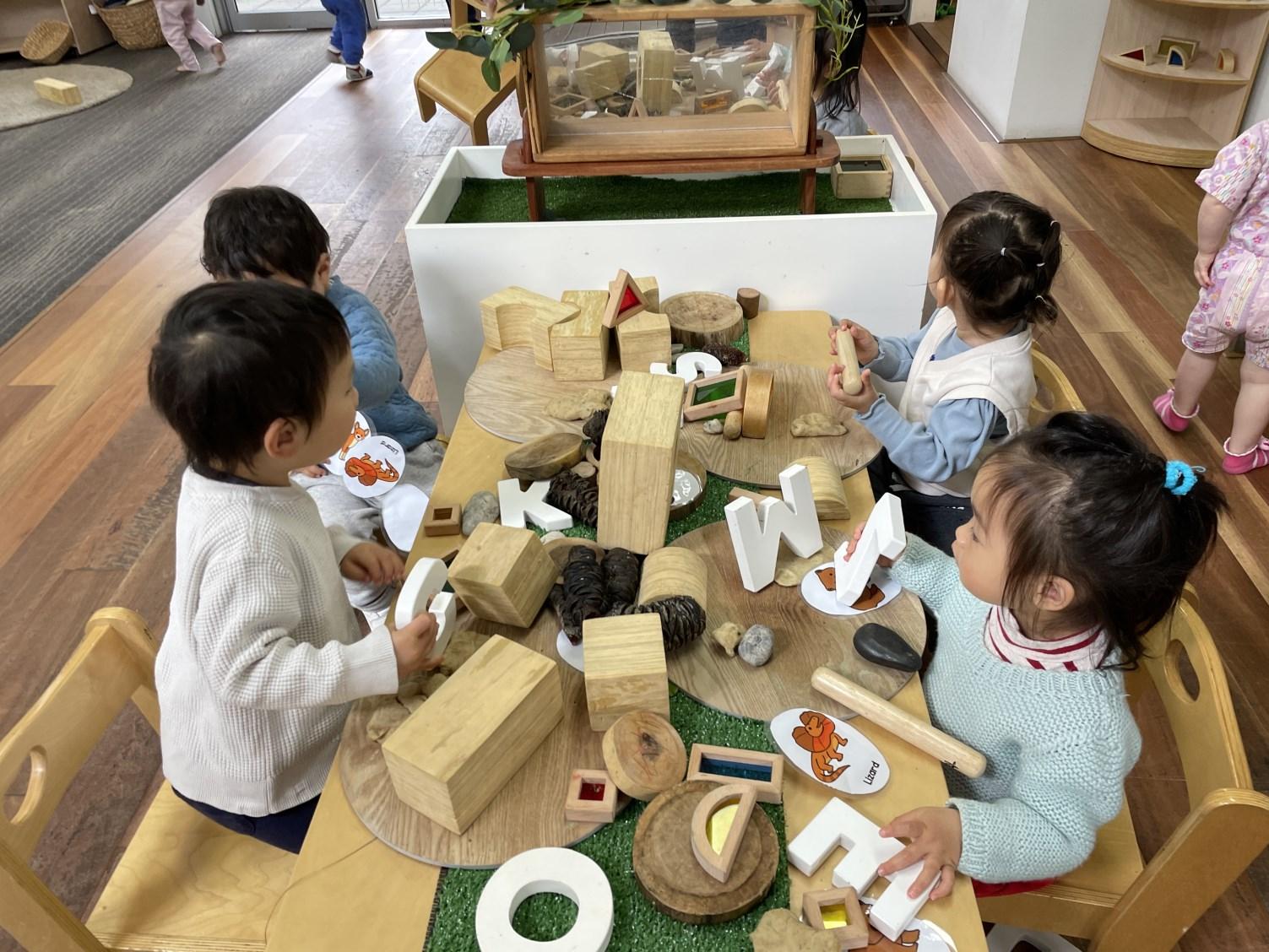
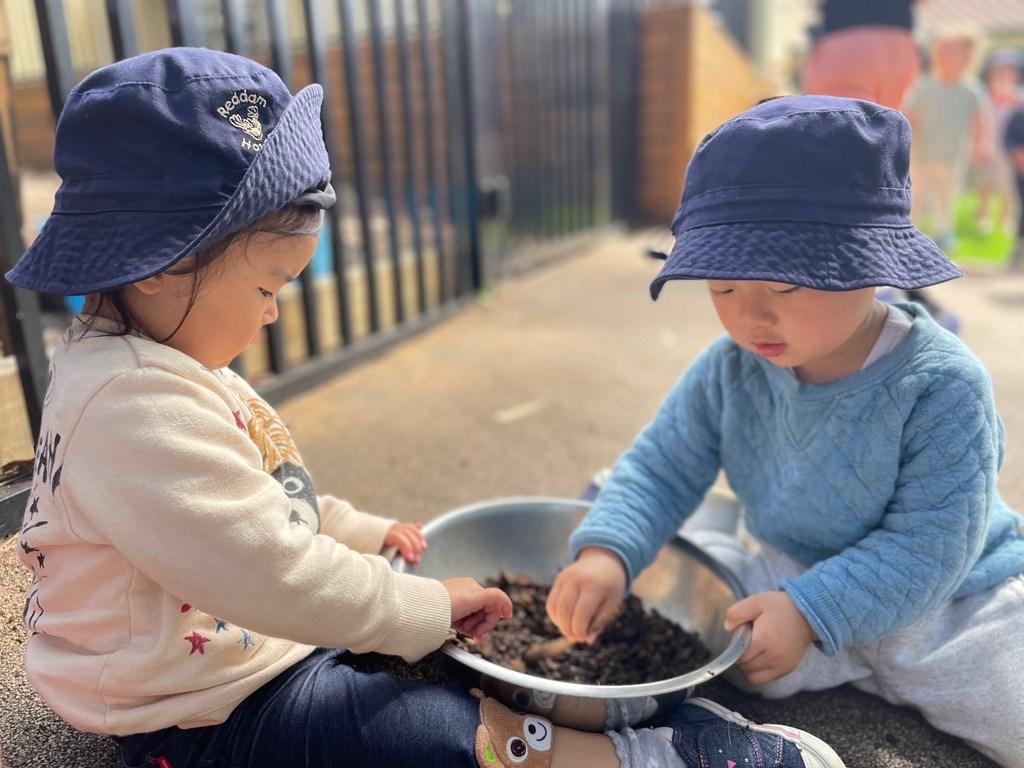
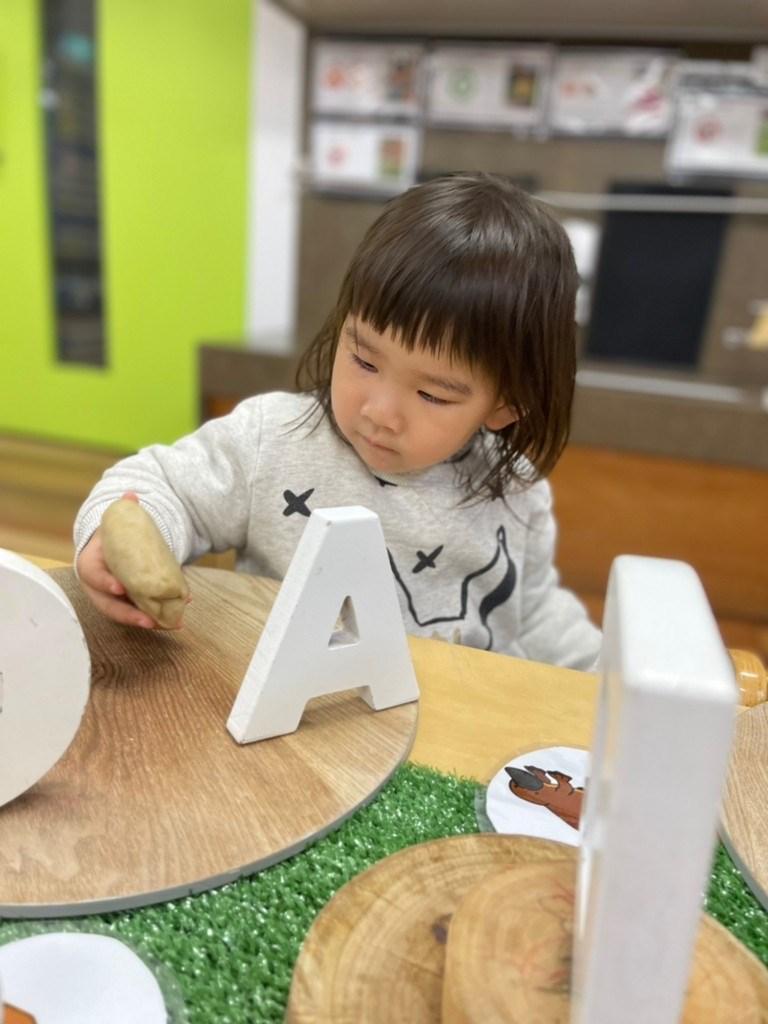
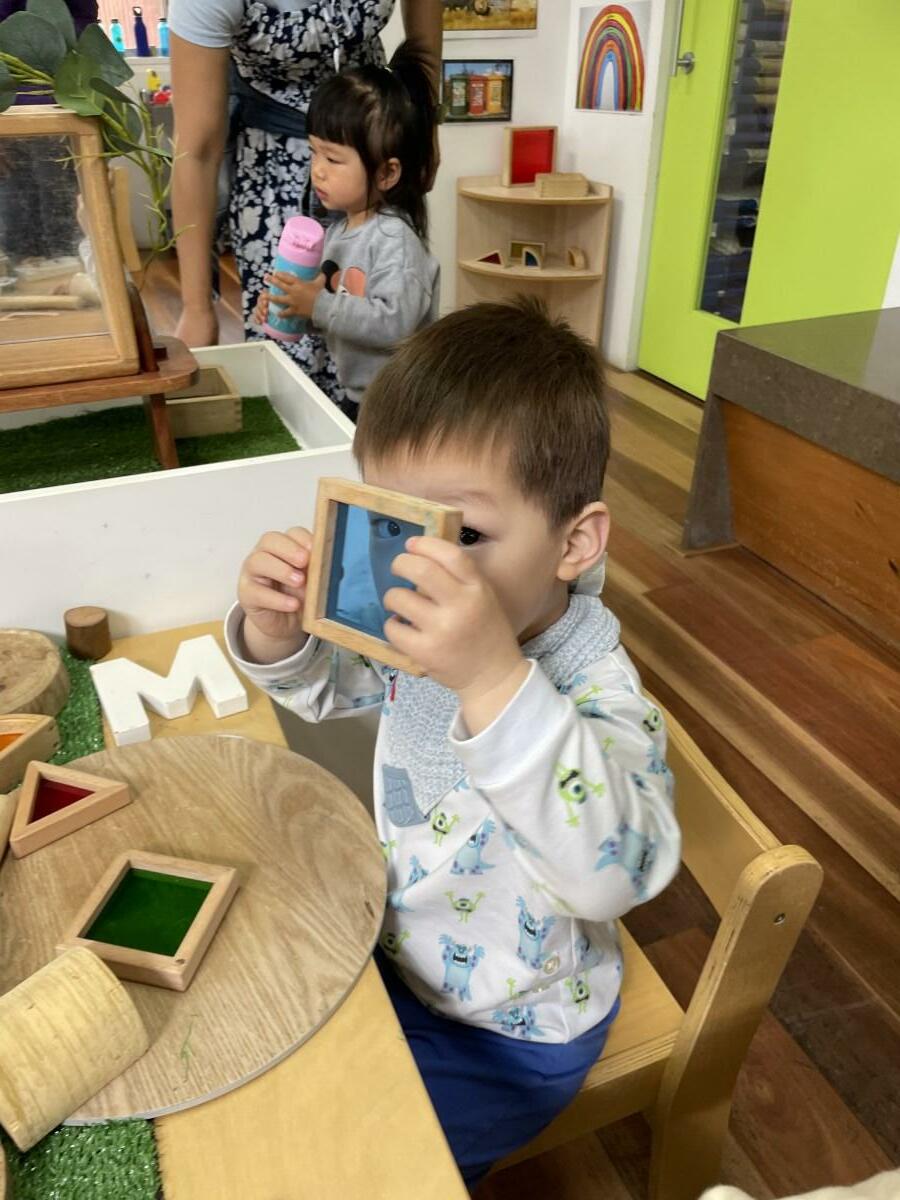
7 Stage 1E:
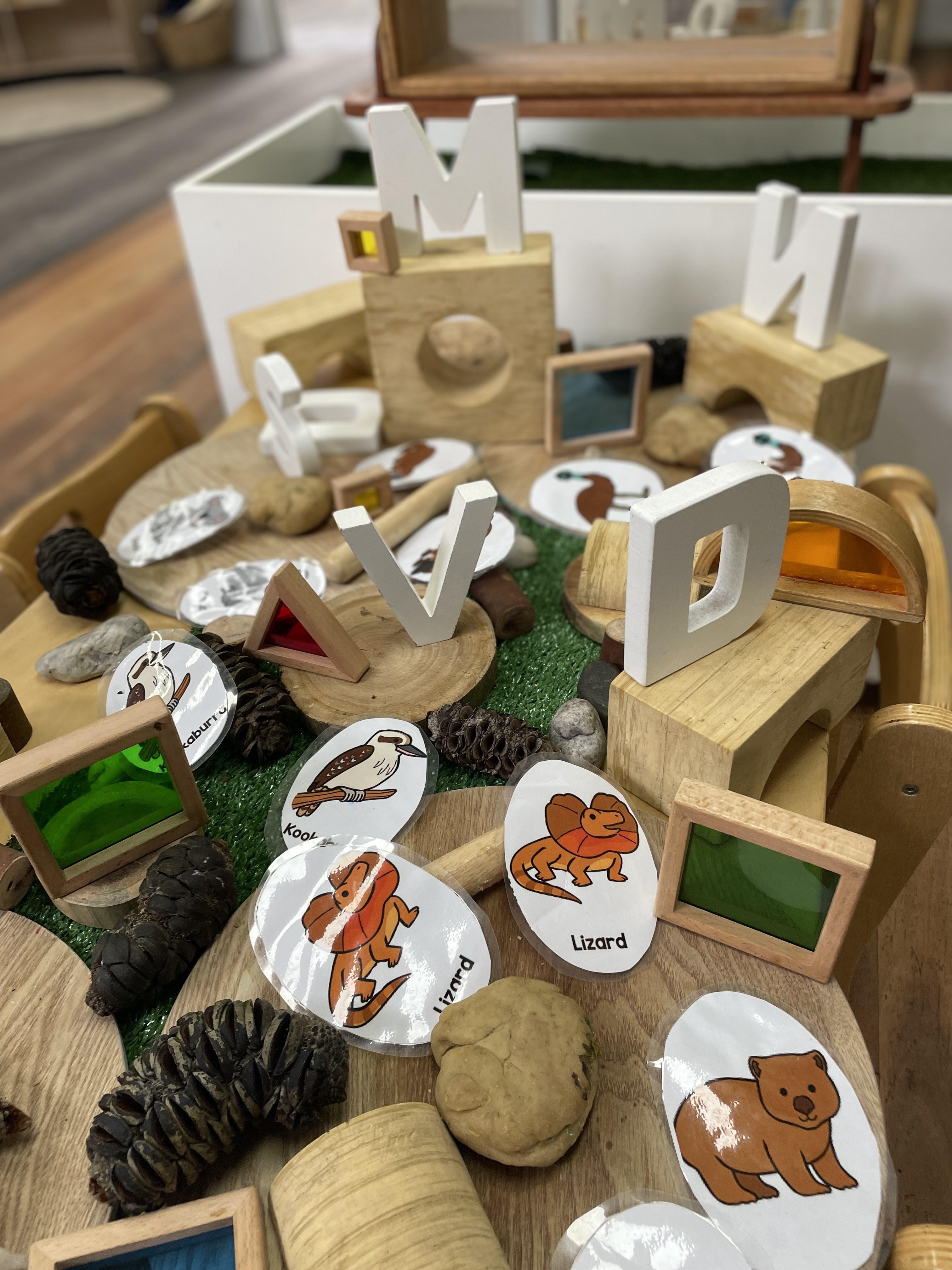
8 Stage 1E:
By Sara Haddadi
Developing a healthy sense of identity and self esteem in young children depends heavily on cultural knowledge and tradition. This week, we travelled to China. Yellow is the colour of monarchy, whereas red, China's national colour, represents happiness and good fortune. We engaged in various red and yellow sensory experiences after being inspired by these two vivid colours. The Chinese rice sensory trays encouraged their fine motor skills as there was lots of fabulous filling and emptying.
The history of Chinese writing dates back more than 3,000 years. Writing each character is like drawing a tiny picture. Drawings were made to look like the objects they represented. This led us to create art using black paint and pretend to write Chinese Characters and words.
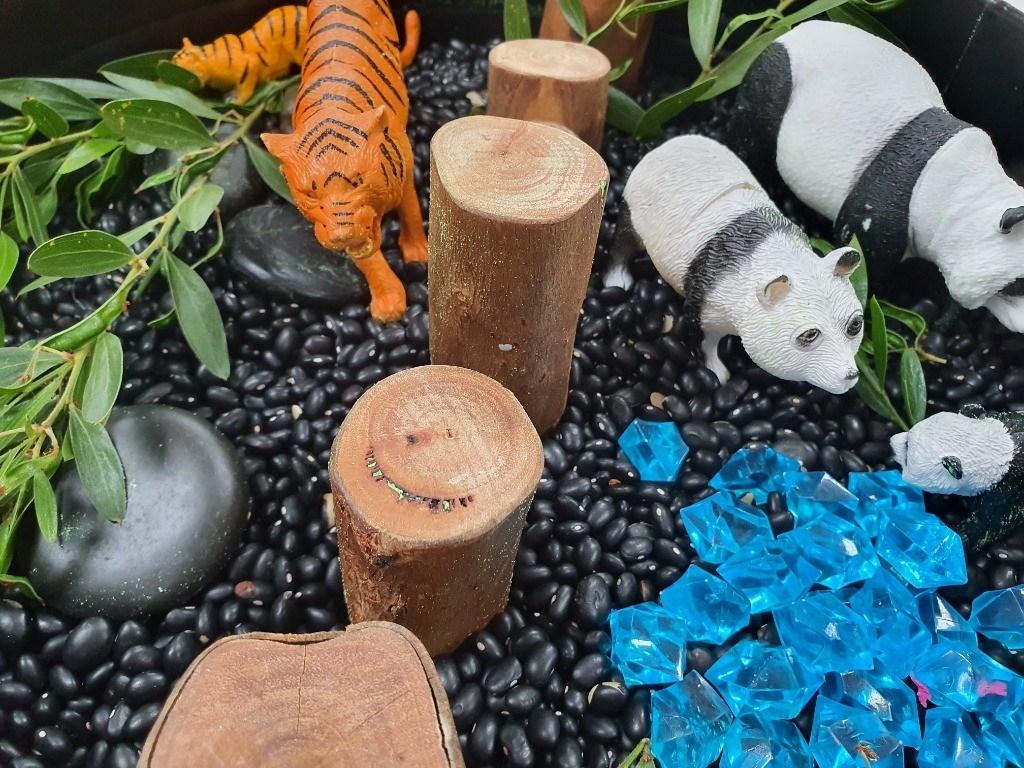
Moreover, 2R was encouraged to learn how to use chopsticks to transfer cooked noodles. Watching how they attempted to use the chopsticks was fascinating and invited them to investigate and problem solve. Throughout the week, the children learned about the animals that live in China, including the giant panda, snow leopard, red panda, and many more.
Dumplings are a popular and meaningful food product in Asia and other parts of the world. According to Miss Connie, Zhang Zhongjing, a Chinese medicine practitioner, invented dumplings and revealed this to 2R. She then explained why this dish had been passed down through numerous civilizations from one generation to the next.
It was a harsh winter, and many people were suffering from the effects of the cold. Zhongjing used the dough to wrap the mutton, herbs, and chillies, keeping them warm by steaming the mixture to hold it all together. People could withstand the cold because these steaming, pillow like delicacies and the herbs that Zhongjing added enhanced blood circulation and prevented frostbite. Many different cultures invented their dumplings, and many of those dumplings look pretty different from what Zhongjing first created. Understanding this unique history helps us better comprehend how food has served as both a necessity and a form of therapy for the body, mind, and soul throughout human history. Inspired by this fascinating story, this week, 2R was invited to make chicken dumplings that involved everyone in our room in the process, and the flavours inside these dumplings turned out to be as rich as the history behind them.
Happy Weekend Everyone!
Team
Stage 2R
9
“Tell me, I forget. Show me, I remember. Involve me, I understand.” (Chinese Proverb)
2R
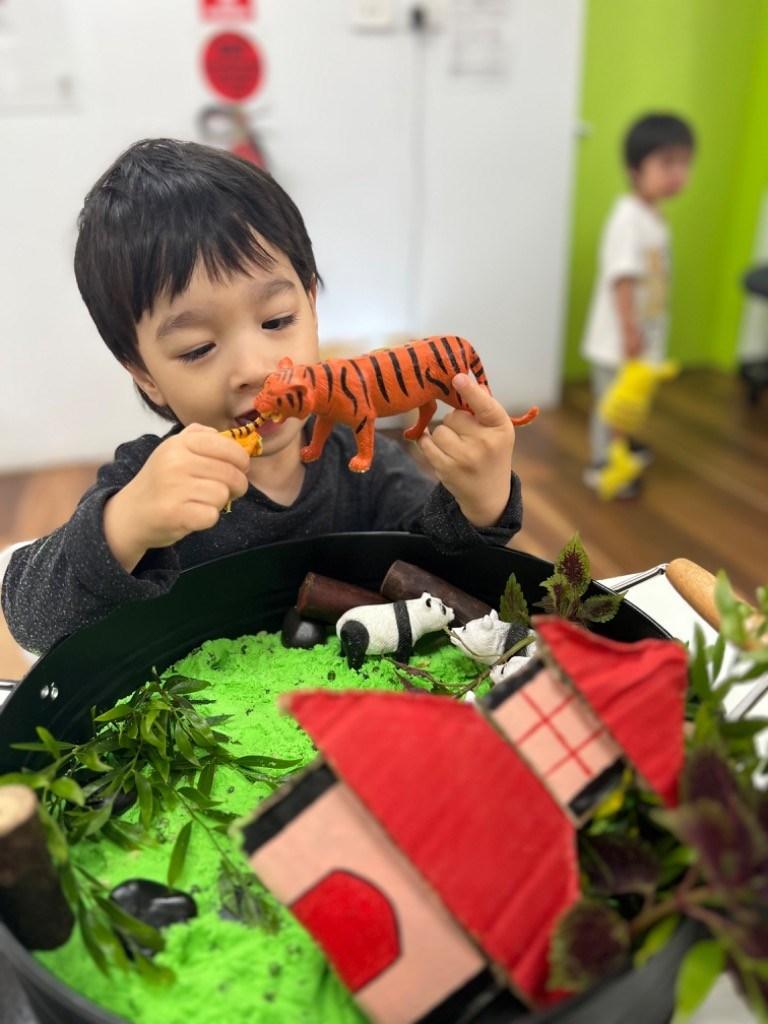
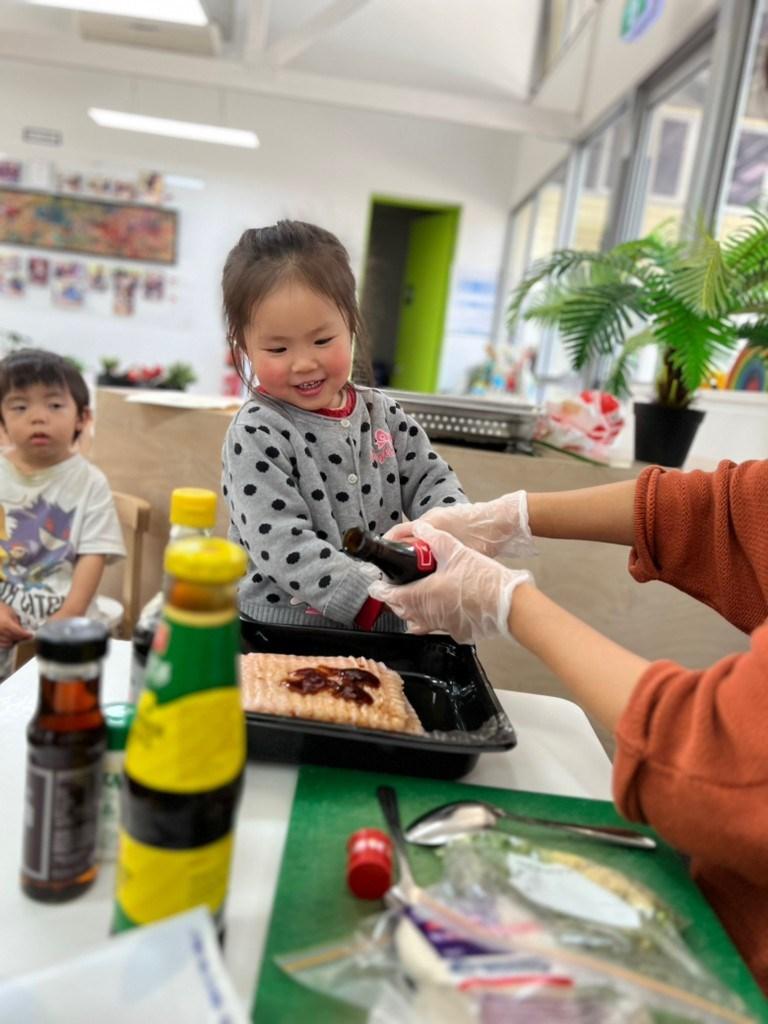
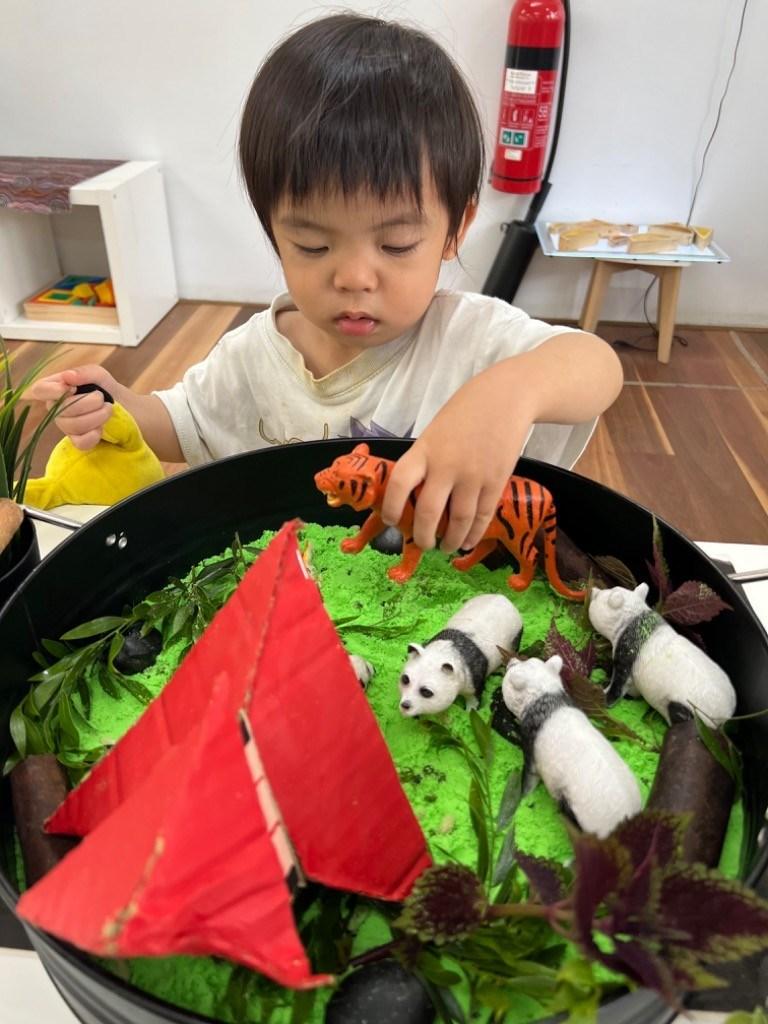

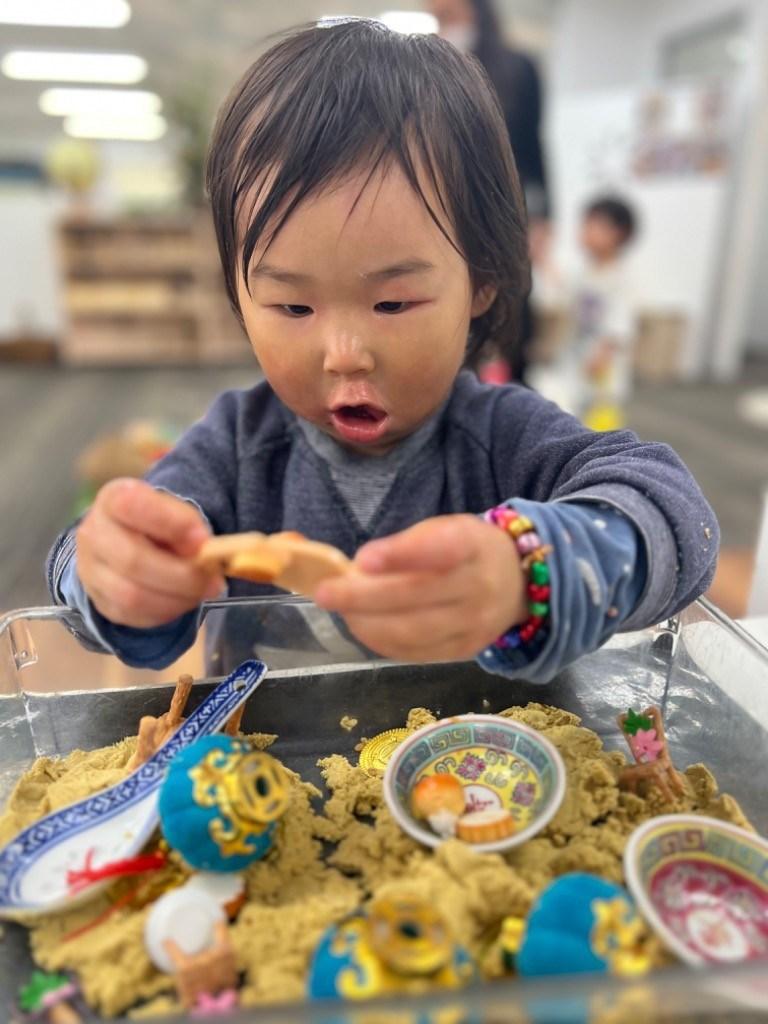
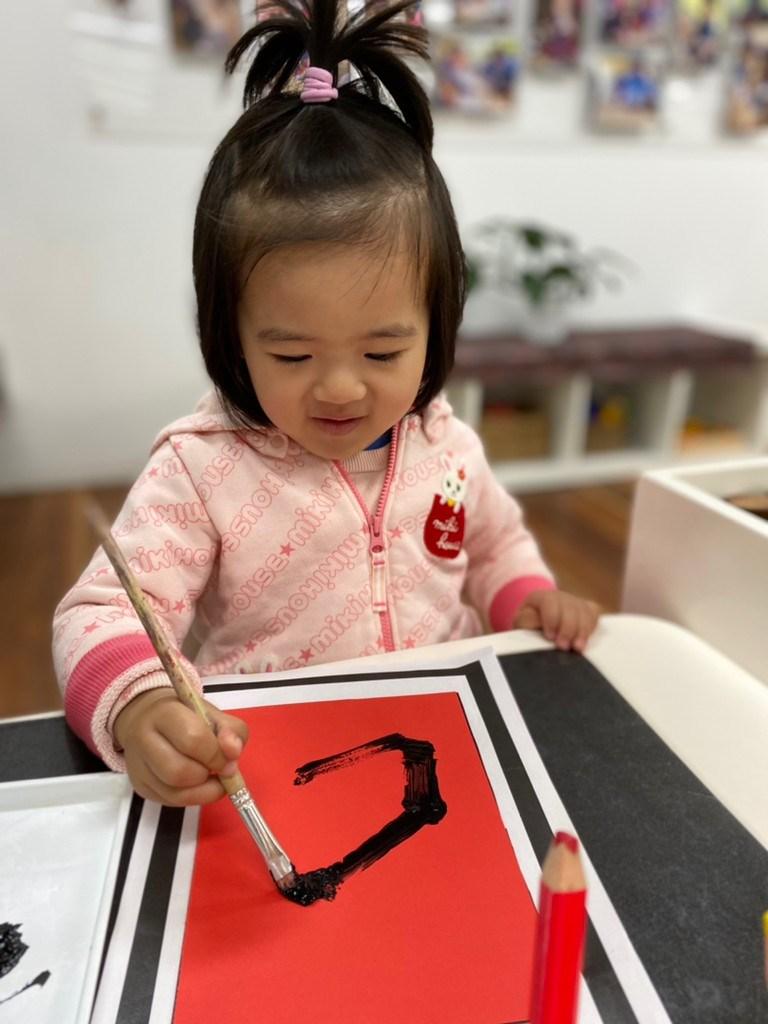

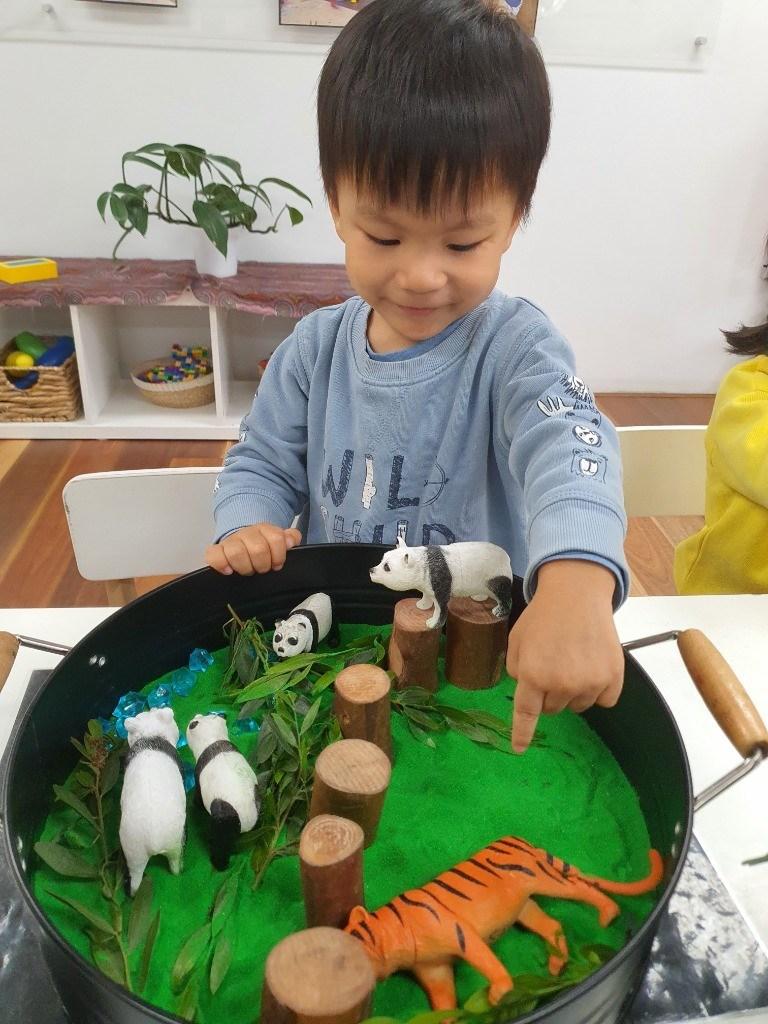
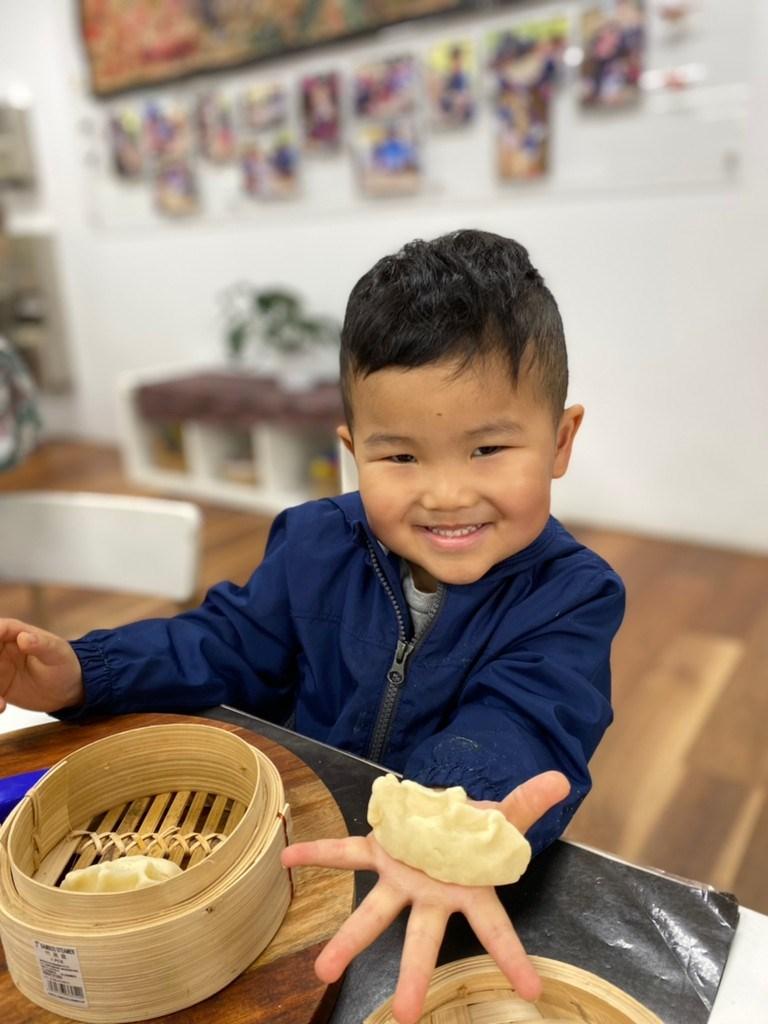
10 Stage 2R:
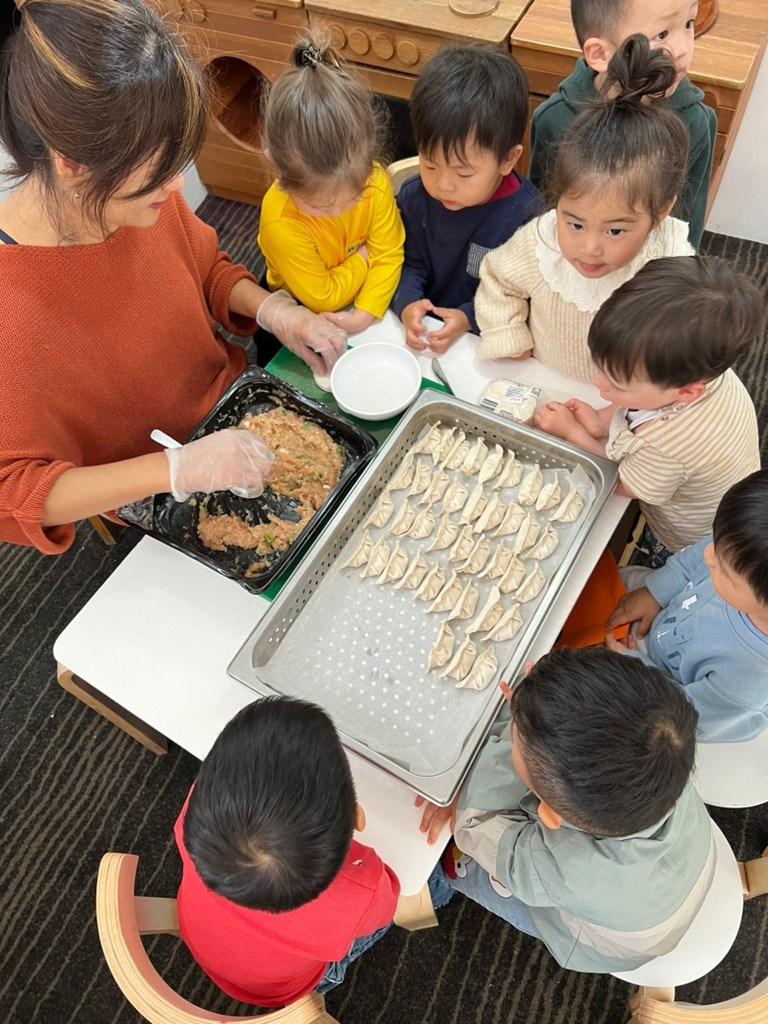
11 Stage 2R:
By Mia Doan
Creating a safe environment and building secure attachments encourage children to talk about their feelings and emotions. From daily interactions and conversations, we can guide children to identify their feelings, openly express them and cope with negative feelings healthily by asking reflective questions, suggesting positive behavioural choices, and relaxing techniques such as breathing and giving personal space.
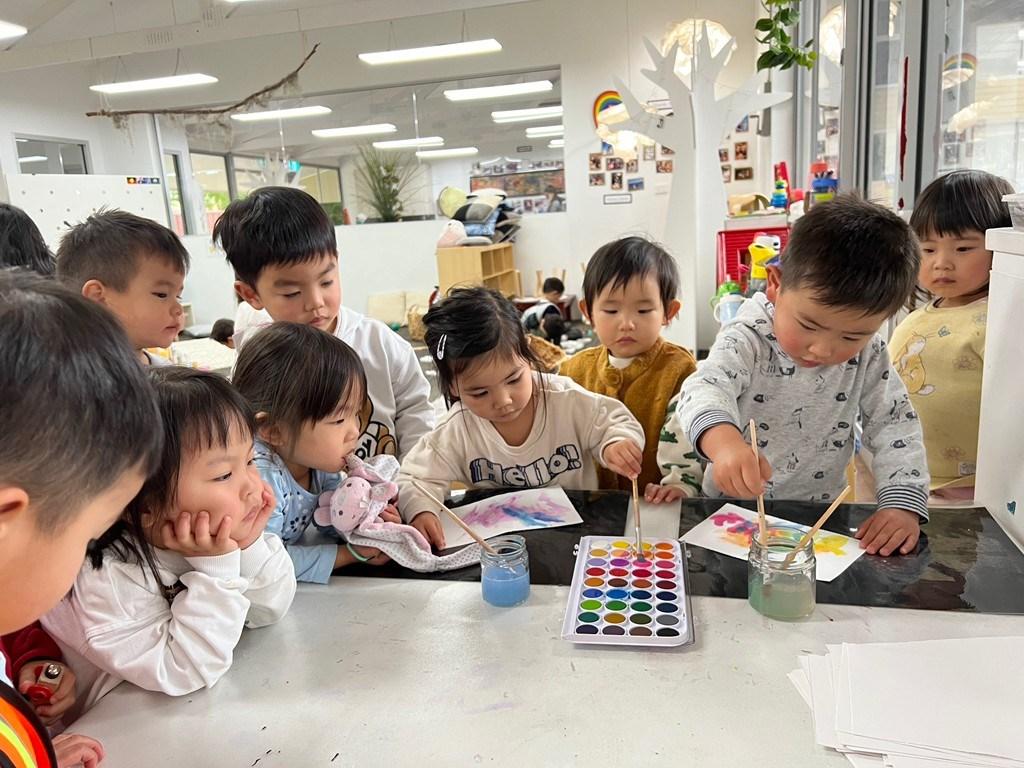
How can you feel loved? The intangible feeling that means so much when we express it with our loved ones. This strong and affectionate feeling can be expressed through a cuddle, a smile, holding hands and nice words. While healthy attachment with parents is crucial, children can also gain from positive attachments with extended family members, teachers and friends. With a simple chart and colour coded column, our friends can tell the symbolic meaning of each colour. They confidently shared their feelings openly by sticking their face sticker on the chart and talked about why they had this specific feeling.
This week's focus is Love is all around in which we expressed our gratitude and love towards our relationships with parents, teachers, friends, nature and all other living creatures. The highlight story of this week was I love you, Stinky Face by Lisa McCourt & Cyd Moore. The story illustrated an unconditional love of a mother to her son. The little boy came up with some of the cutest and funniest questions to test his mother whether she would still love him if he is a stinky skunk, hairy ape, alien, dinosaur and cyclops. 2E friends made a prediction that his mom would stop loving him when he turned into a stinky skunk. However, the back and forth conversation helped us to understand our mummy's unconditional love. Our 2E children enjoyed the story and re read it multiple times.
On the provocation table, getting to know 2E children and what they love, all activities were designed and based on the children’s interests to heighten children’s engagement and excitement. Joining in a STEM experience with scented bi carb soda ice cream and vinegar was the most attractive activity of the week. When we dropped vinegar on top of each ice cream, the chemical reaction made a fizzy sound and the pleasant aromas from lemon, strawberry, peppermint and bubblegum. 2E children were also invited to use loose parts to trace and match the colours with the rainbow and love hearts.
At the art table, the children were invited to explore watercolour painting. They made lines from different colours. Some friends attempted to draw circles. We will wait for our art to dry and add love hearts using playdough cutters. This process of art allows children to revisit and add on ideas and colours that they like.
Stage 2E
12
“Those who have a strong sense of love and belonging have the courage to be imperfect.” (Brene Brown)
Have a lovely weekend, Mia, Chloe, Shandie, Jing, Jaycel and Alisha

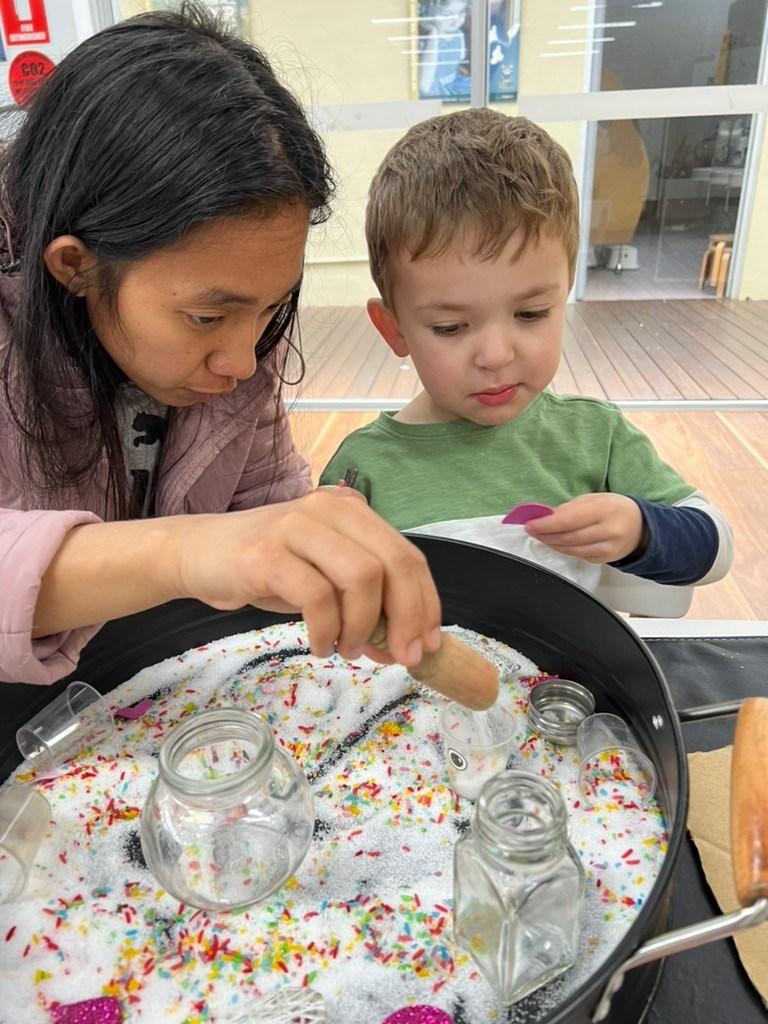

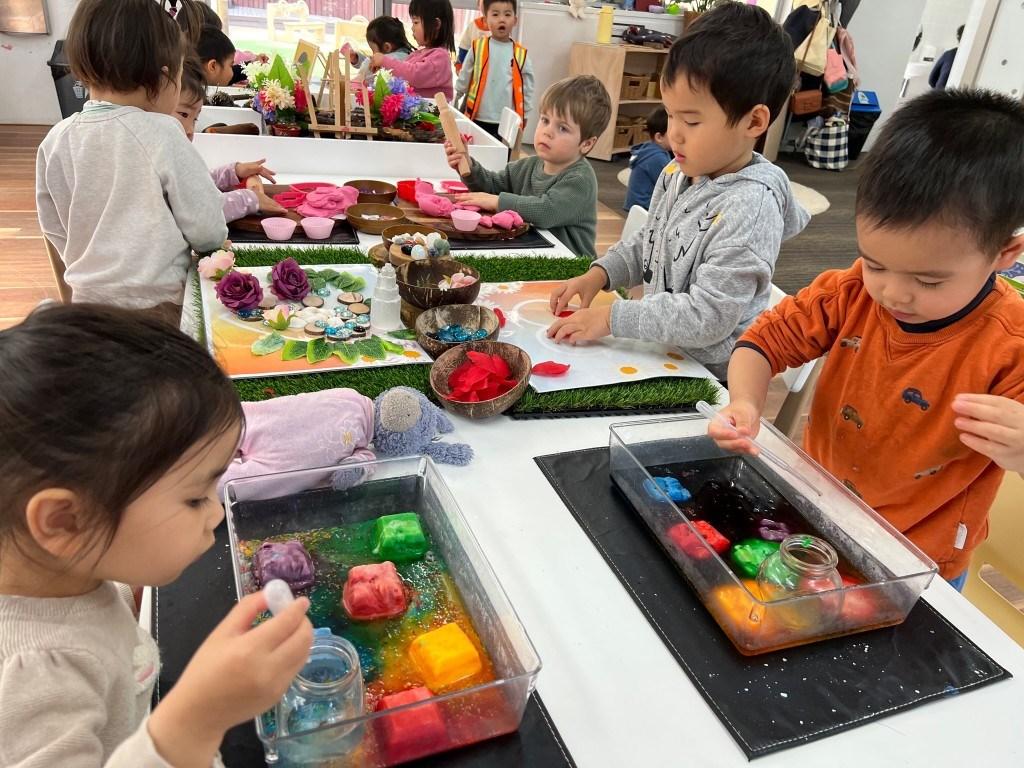
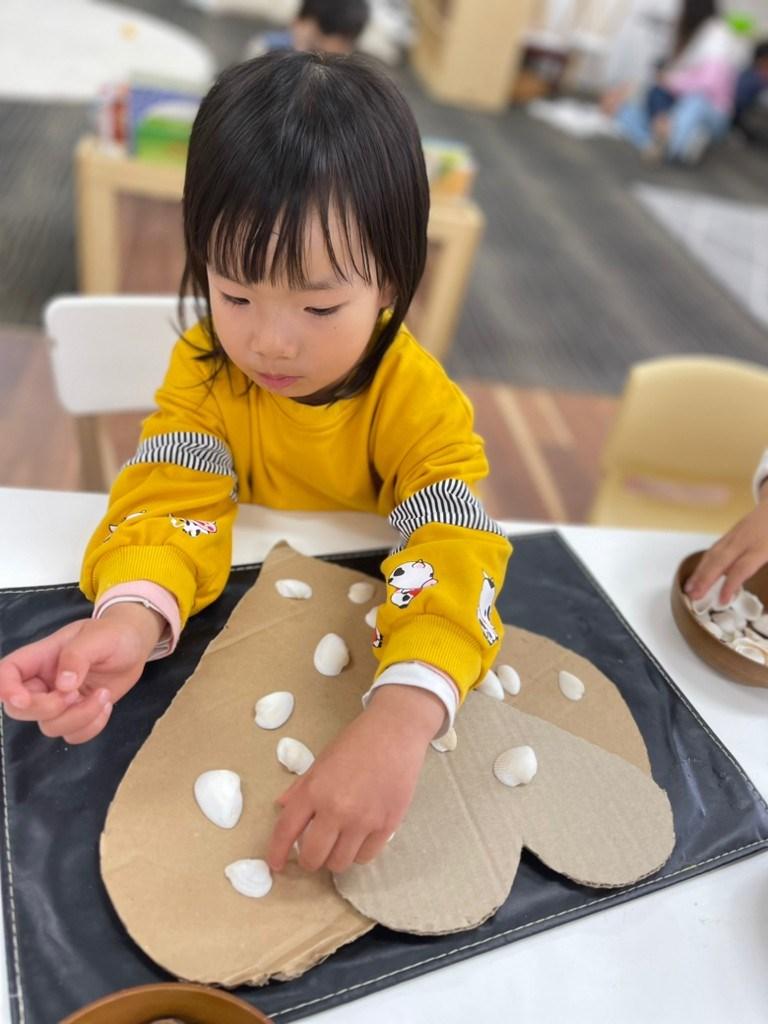

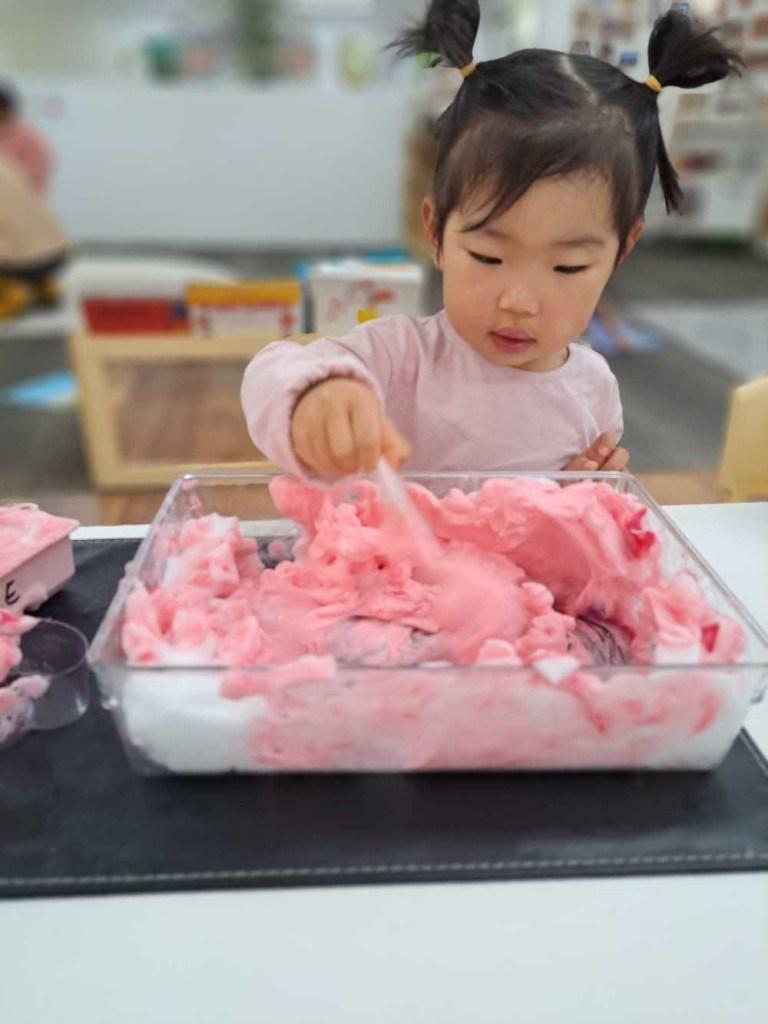
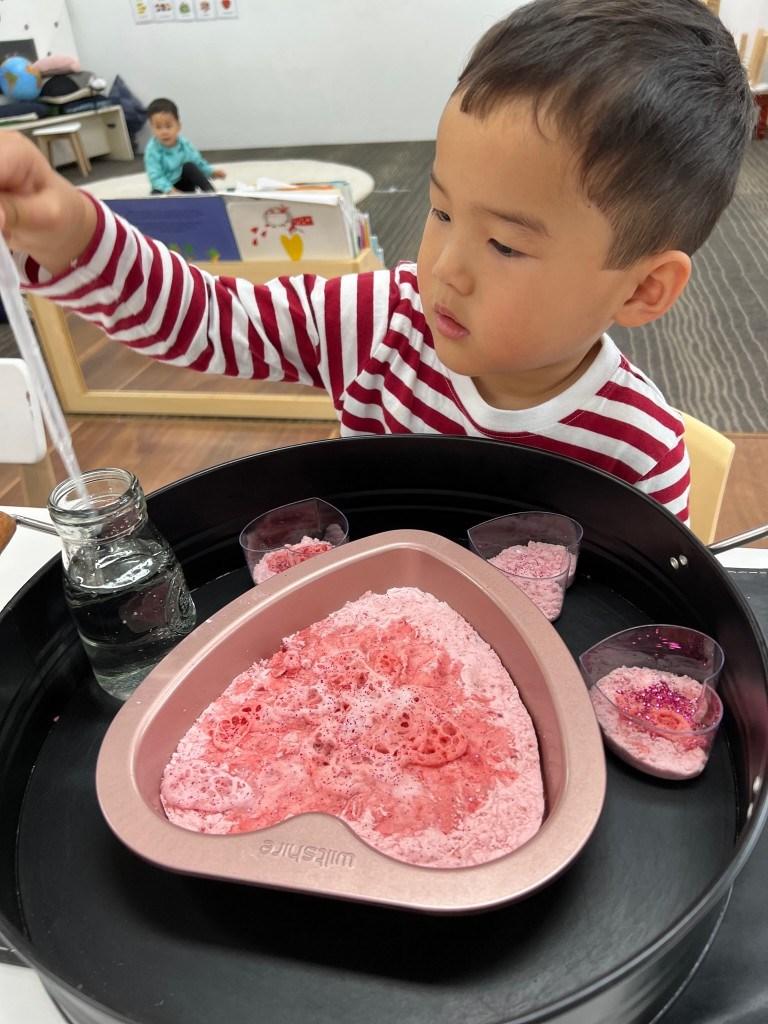
13 Stage 2E:
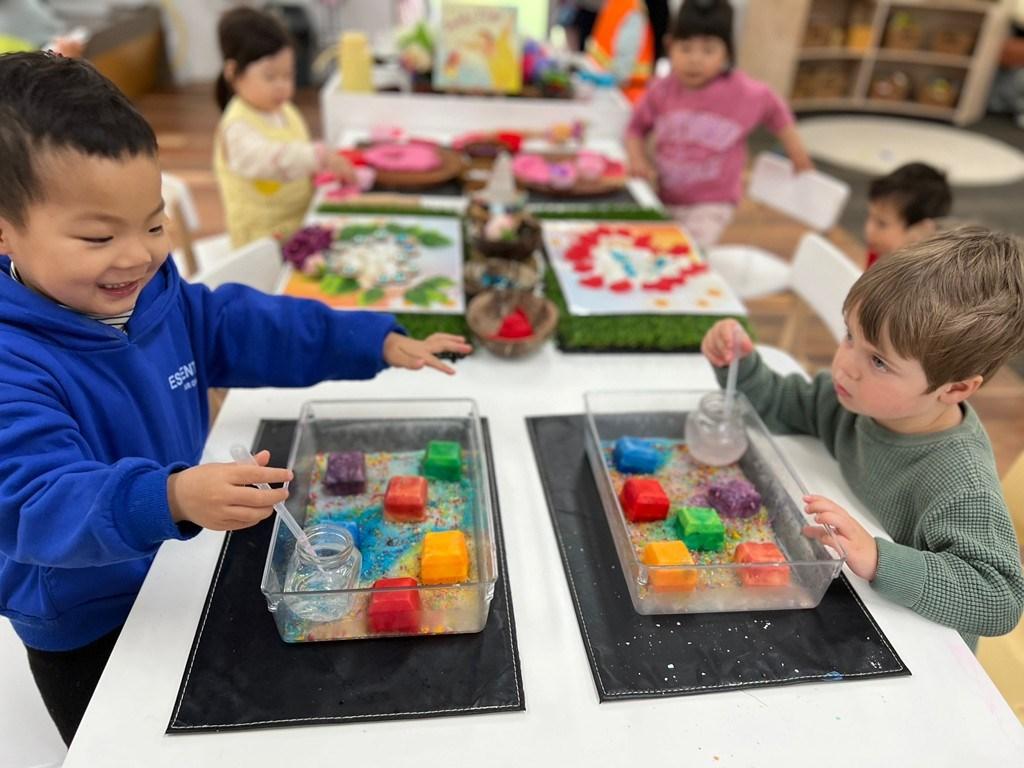
14 Stage 2E:
By Grace Nolan
This week we change it up by offering Halloween experiences as well as our dinosaur inquiry experiences.
Halloween experiences saw children measuring lentils into pumpkin buckets and the children also created Jack’O Lantern faces on an orange dyed rice and lentil sensory tray. Kai and Angus giggled together as they created “scary monster faces!” (Kai). On our sensory table we included vibrant pumpkin coloured play dough which the children could mould and shape. Our permanent playdough area continues to be a classroom favourite among our little friends as they sculpt, squeeze and squish to improve their fine motor strength. The children also collected small wooden eyeballs with children’s tweezers and transferred them into a glass jar.
In our morning meetings dinosaur figurines have been passed around for the children to consolidate their understanding about the different features of the dinosaurs and practice using descriptive language.
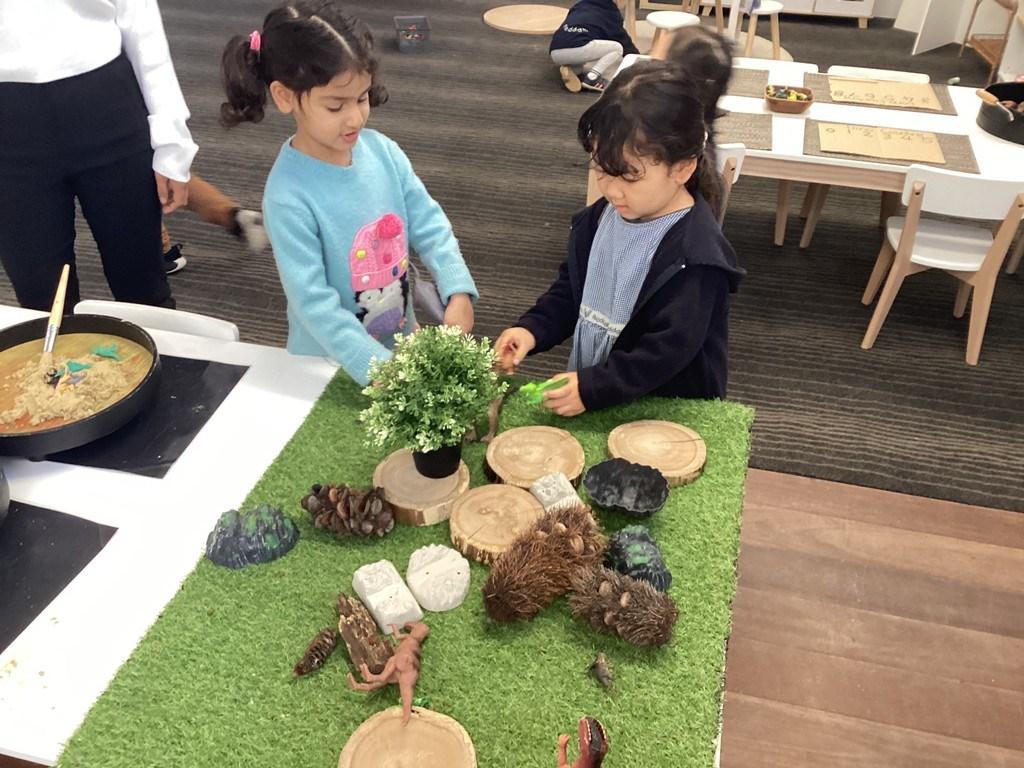
Our small groups this week included making fossils Miss Carina took her group to the upper grass area to create fossil prints. The children rolled out salt dough and pressed various dinosaur stamps to make fossil ornaments for our classroom.
Miss Grace and Mr Bayden the dinosaur small world to identify different types of dinosaurs and consolidate information such as bipedal and quadruped dinosaur types.
Mr Callum’s group were guided to draw dinosaurs. The group were encouraged to choose a dinosaur before challenging themselves to draw it.
Michael “ I drew a tree and leaves.” Kai “ I drew a eye”
Next week we look at collaborating together to place the different dinosaurs around the globe and sorting between bipedal and quadriceps.
Grace, Carina, Callum, Beyden
Stage 3R
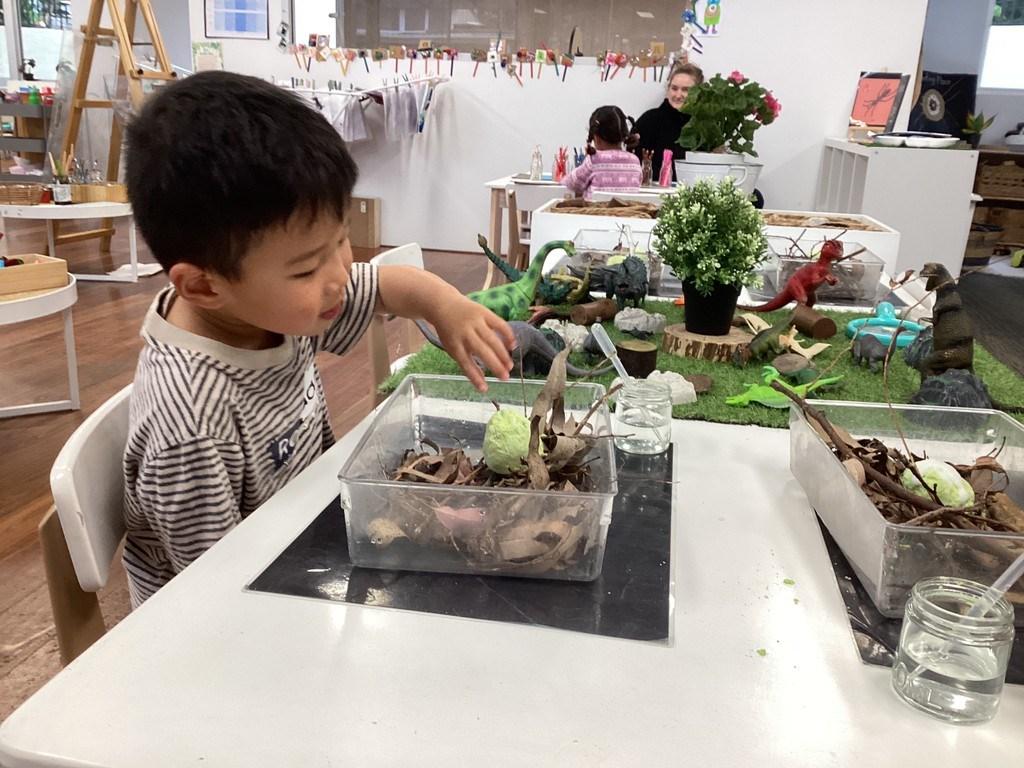
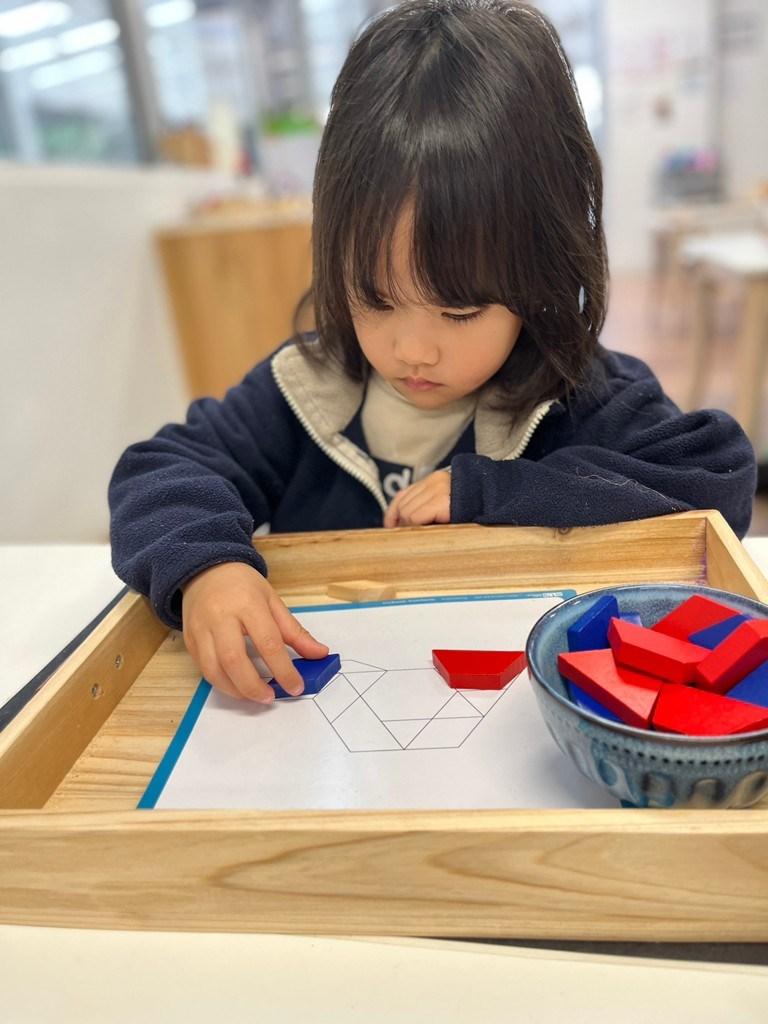
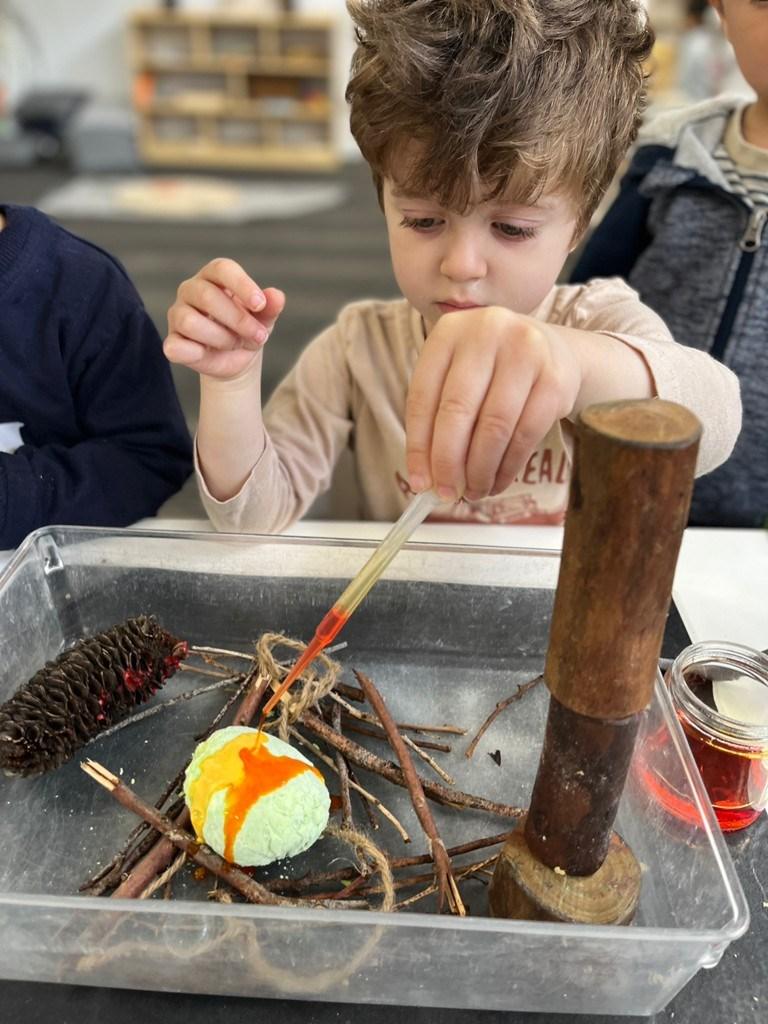
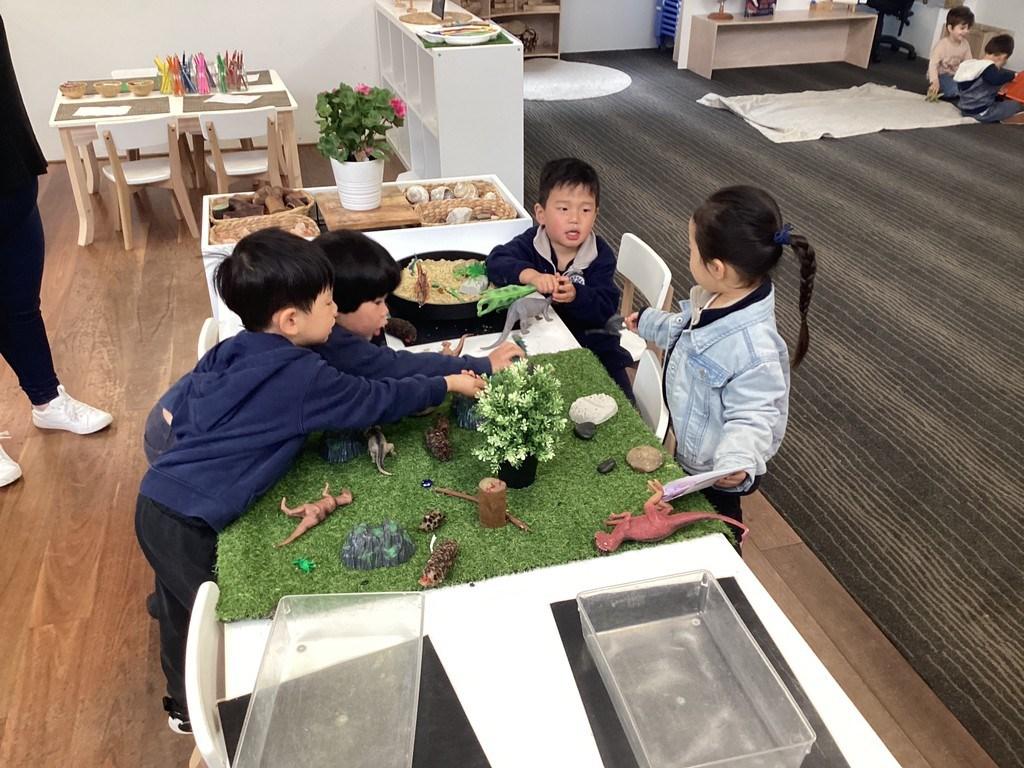

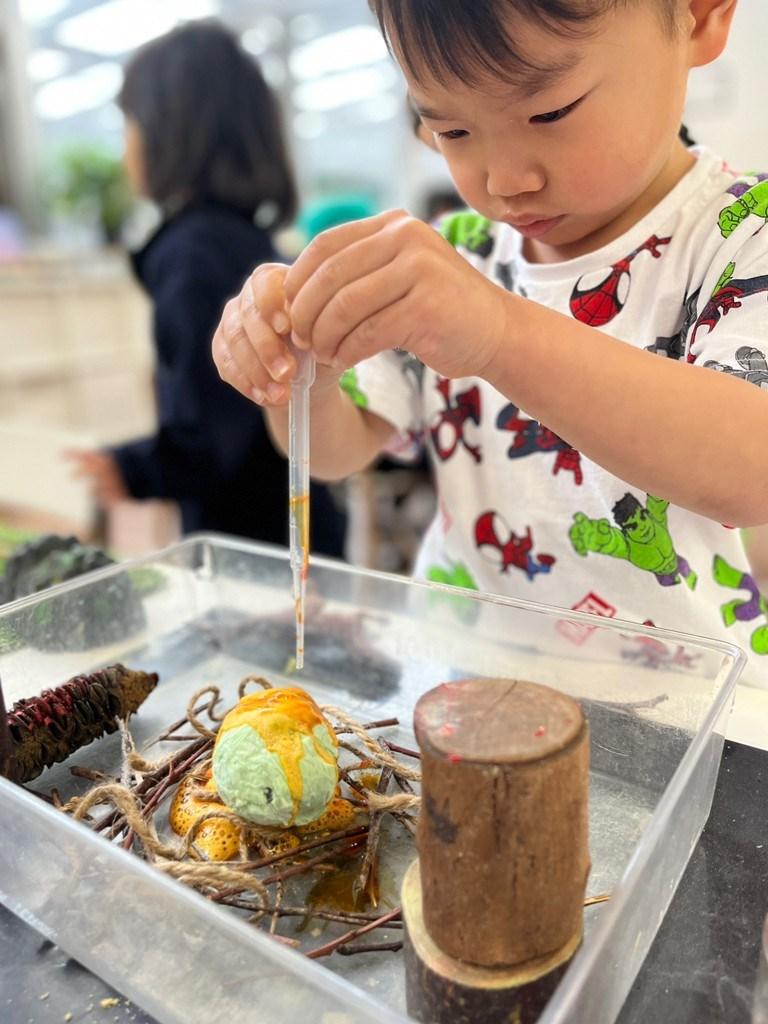
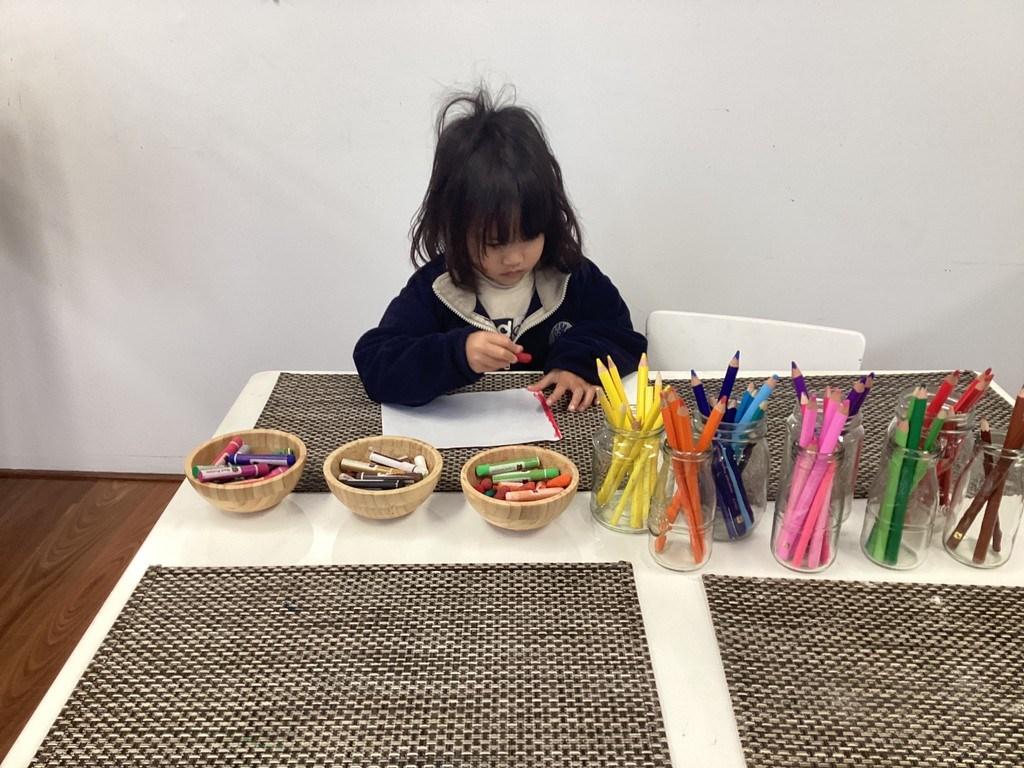
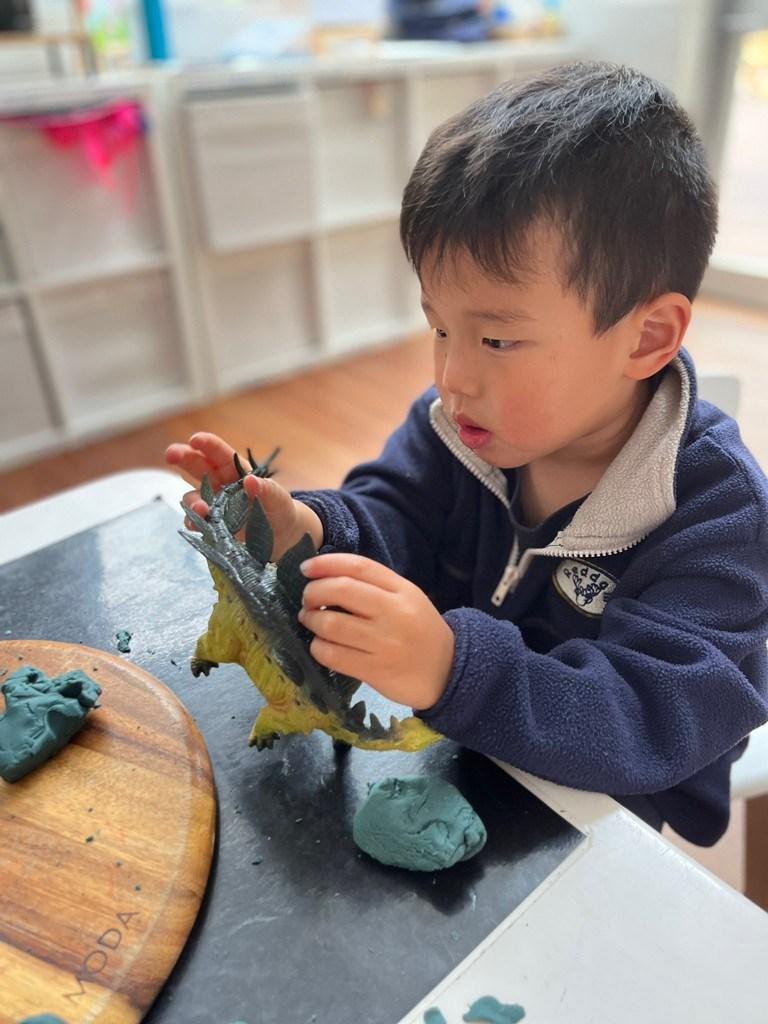
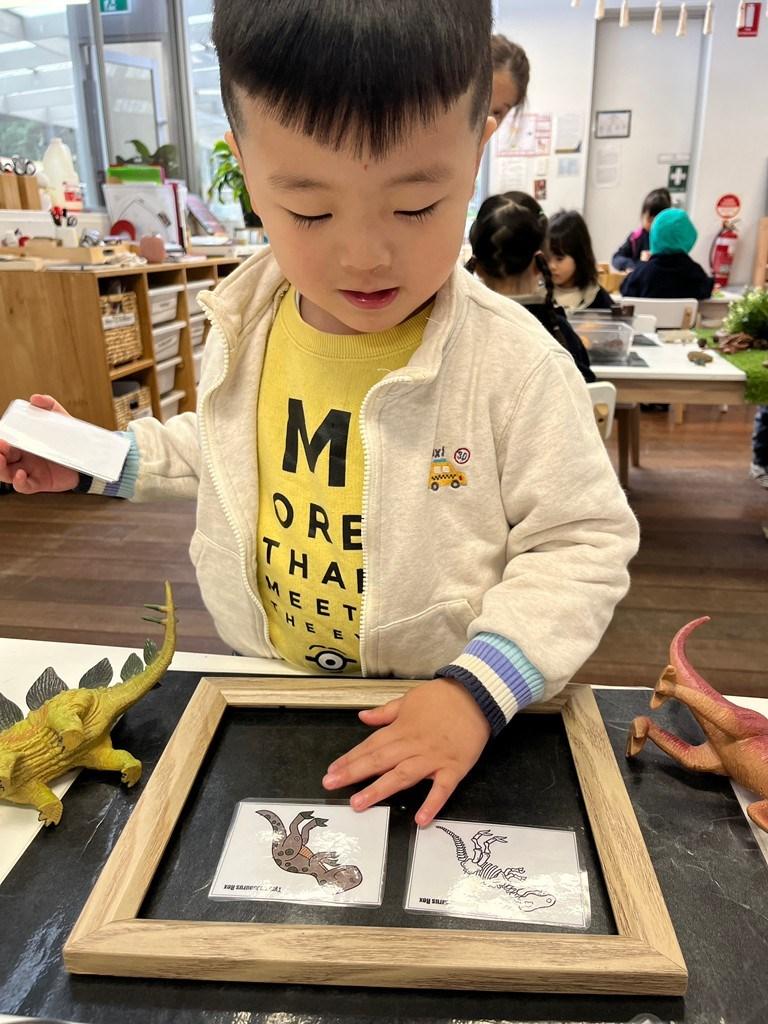
16 Stage 3R:

17 Stage 3R:
By Natalie Horstman
“It is not enough to simply teach children to read; we have to give them something worth reading. Something that will stretch their imaginations something that will help them make sense of their own lives and encourage them to reach out toward people whose lives are quite different from their own” Katherine Patterson.
The children in 3E have continued to explore literacy through play and small group activities where they have been able to listen to different stories, share their differing ideas and thoughts about what could happen before, during and after; as well as drawing various illustrations to showcase their imagination and creativity. During Week 2, the children were invited to practise writing their name upon arrival, using the whiteboard and other materials to write their name with, and using other loose part materials to find different letters to match the corresponding objects and pictures. The children seemed to draw meaning and establish further connections from finding different letters around the room and identifying various things that start with the letter. For example, we had some lovely ideas including, “A is for apple” “P is for pig” “M is for monkey” and “C is for cat” This allowed the children to enhance their pre literacy and comprehension skills and broaden their vocabulary. Furthermore, some of the learning opportunities the children have enjoyed the most include:
• Engaging in small groups during games of alphabet bingo where they are required to match letters to objects and vice versa.
• Using the new sign in table where they can practise writing their name upon arrival.
• Using the calendar and weather chart to find out what date and day it is, as well as looking closely at different weather patterns that occur during the day.
• Using their comprehension skills to listen to different stories, and draw different pictures of what they think the story will be about, and what happens during and after the story is finished.
• Engaging with various loose part materials to identify various letters and their corresponding sounds.
Warm regards, Laura, Natalie, Kai and Margaret
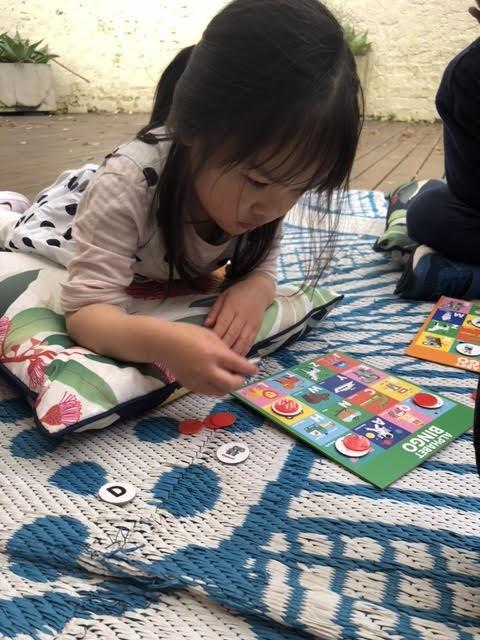
Stage 3E
18

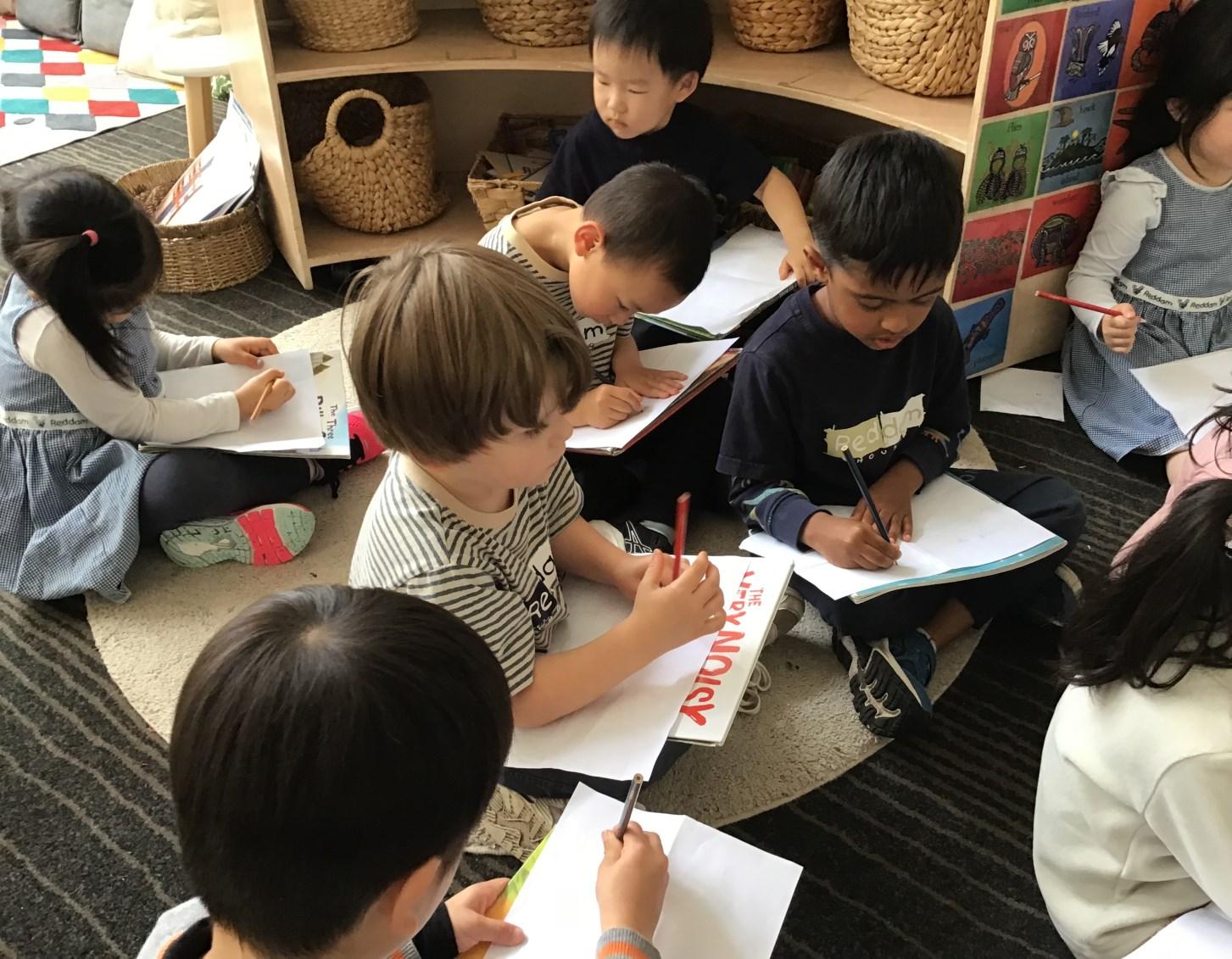
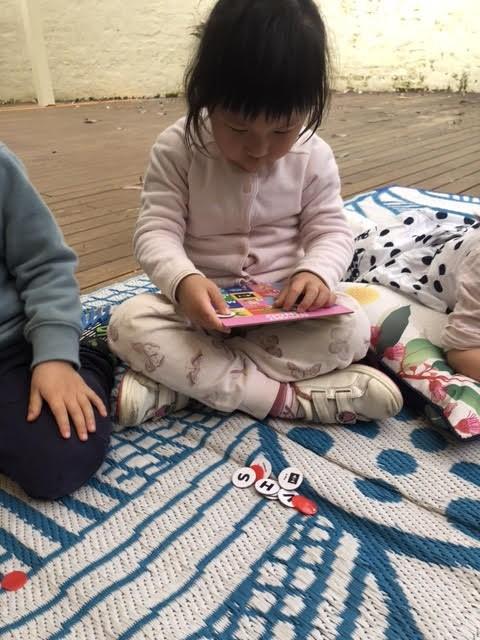

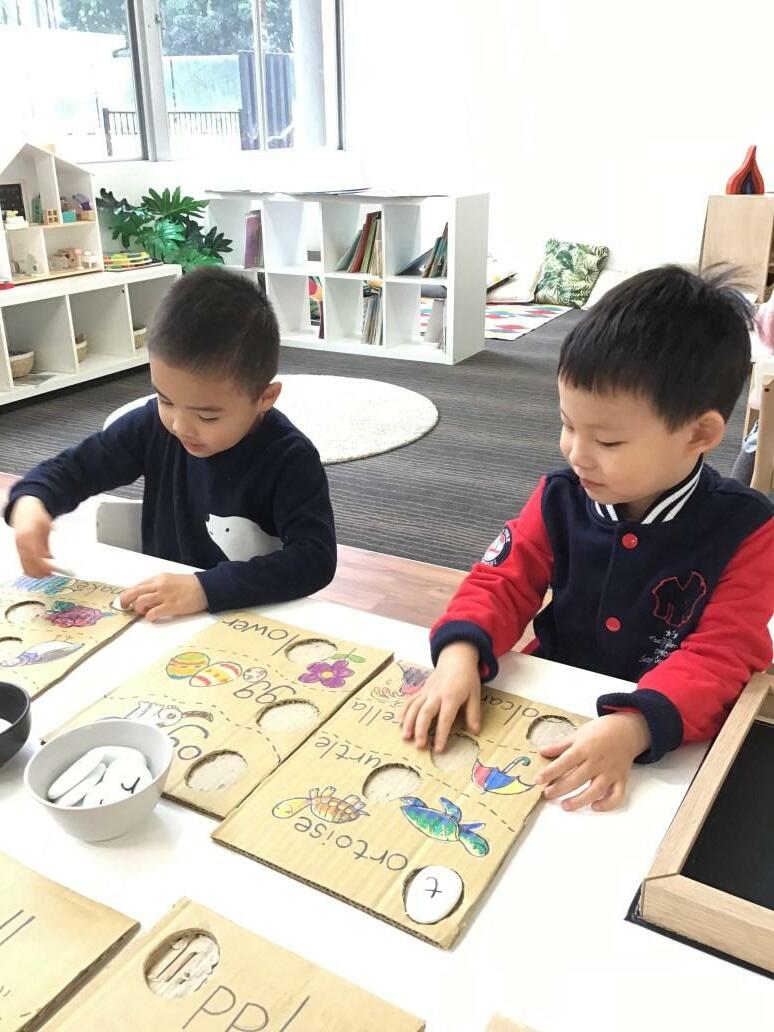
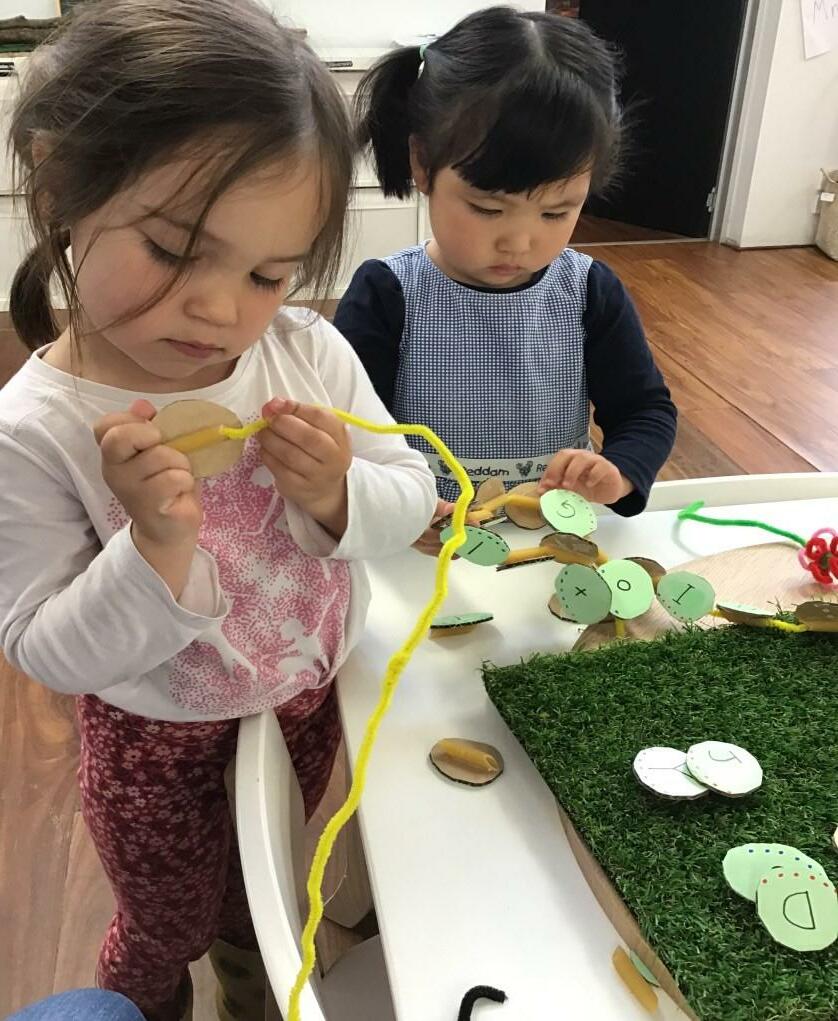
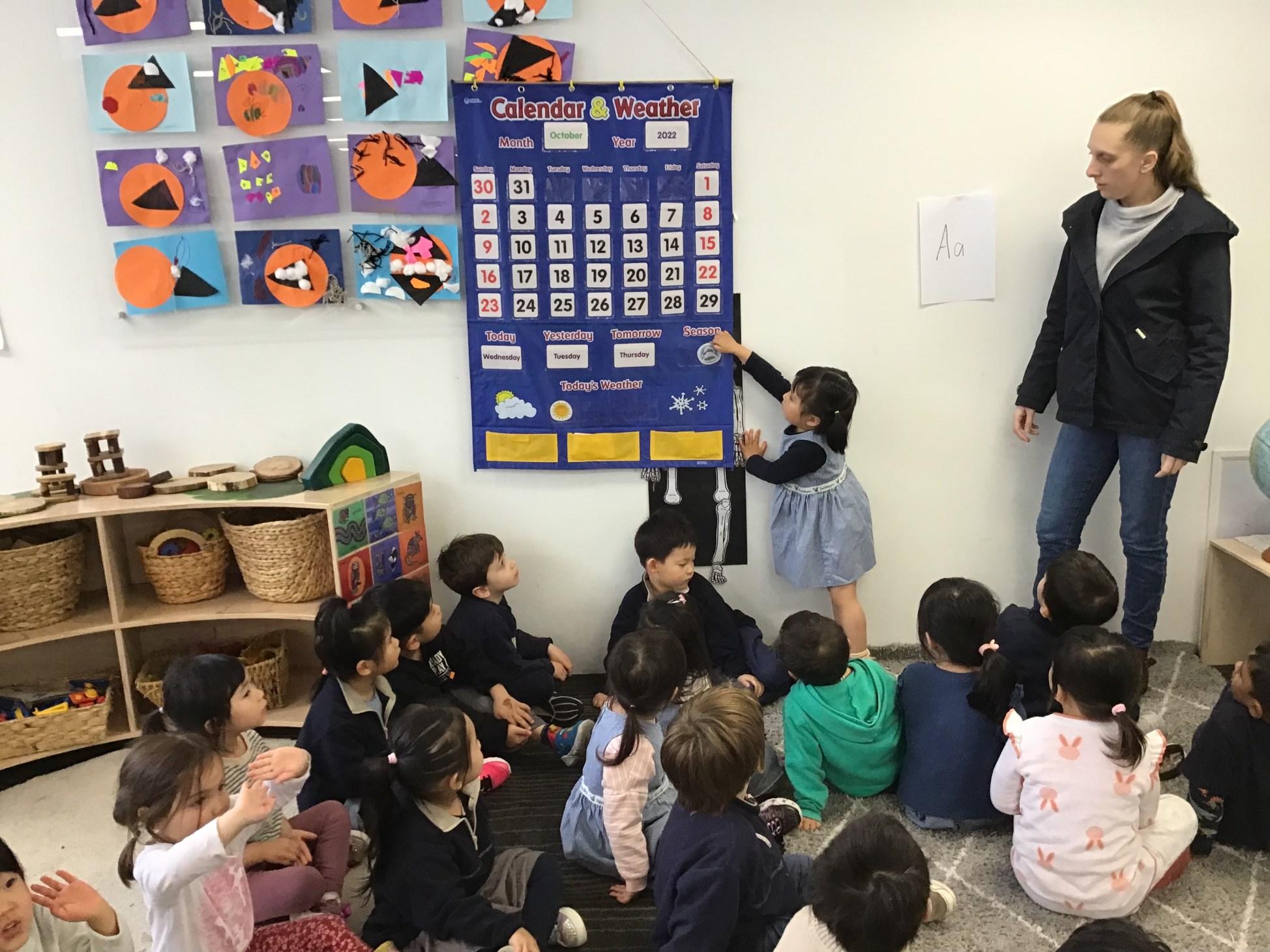
19 Stage 3E:
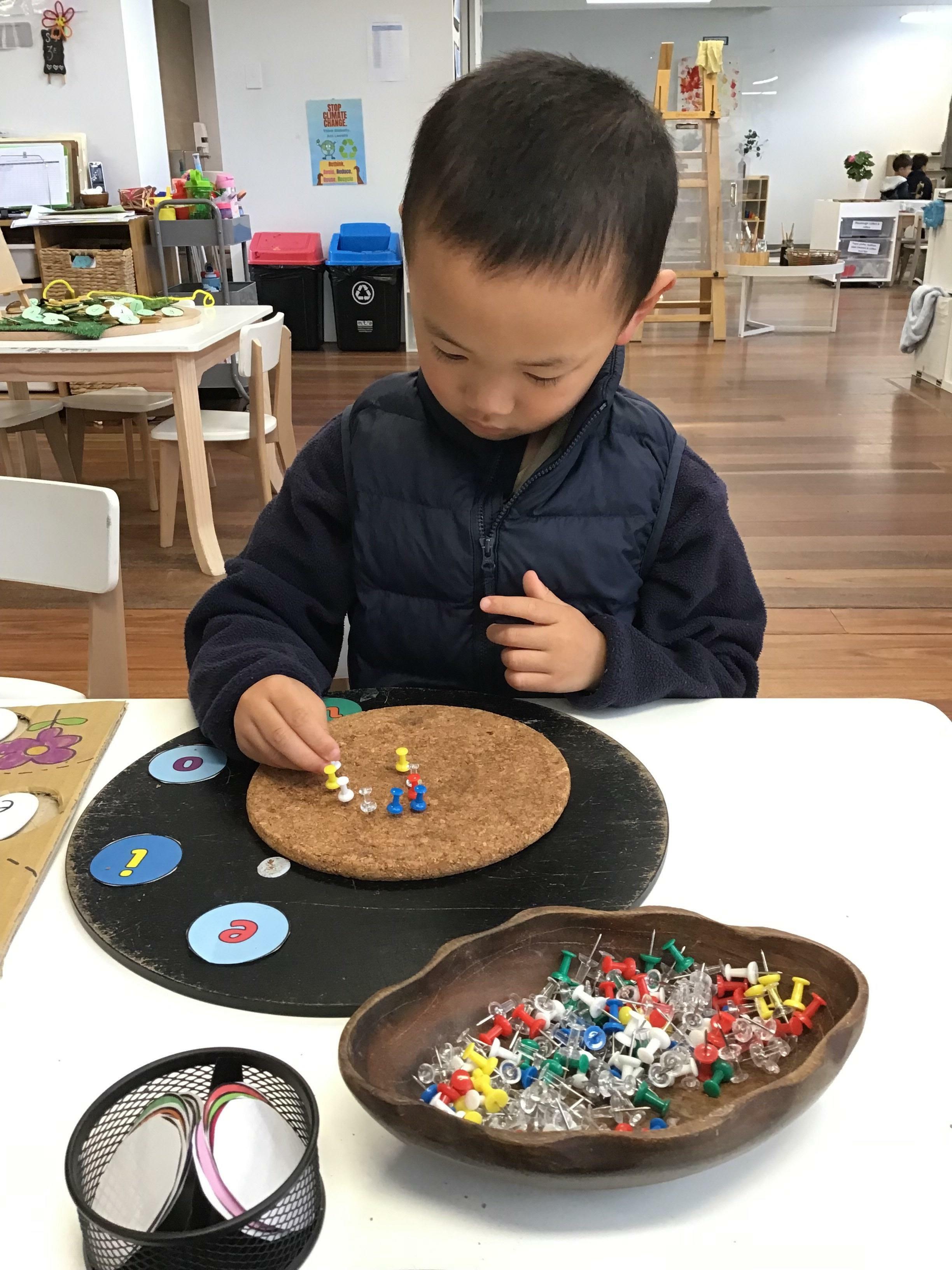
20 Stage 3E:
Throughout the week, we extended on the children’s interest in graphing. We compared and sorted our shoes, and discovered that only two people had yellow shoes and ten people’s shoes had laces. We also graphed our favourite things, ‘Favourite Colour’, ‘Favourite Fruit’ and ‘Favourite Breakfast Food’. The children were each given a counter and asked to place it on the graph in the column of their choice. We discovered that watermelon was the most popular fruit and that the least amount of people like the colour green. We also played a game of 'Would You Rather?' and recorded our results. First the children chose between rice and pasta, then if they preferred winter or summer, and lastly the children were asked 'Would you rather chocolate or lollies?'.
The children have also been very interested in patterns since painting school uniforms last week, so this week on the atelier we created patterned vases. The children used rulers to create lines on their vases and then filled in these rows with a variety of patterns. Next the children added colour to their artworks, exploring AB patterns as they added paint to alternating rows.
Because of the children's interests in patterns, at the sensory table they were provided with coloured pom poms to make patterns with. To further extend on our uniform paintings, rulers were added to our drawing centre as the children loved using them to create lines and patterns last week.
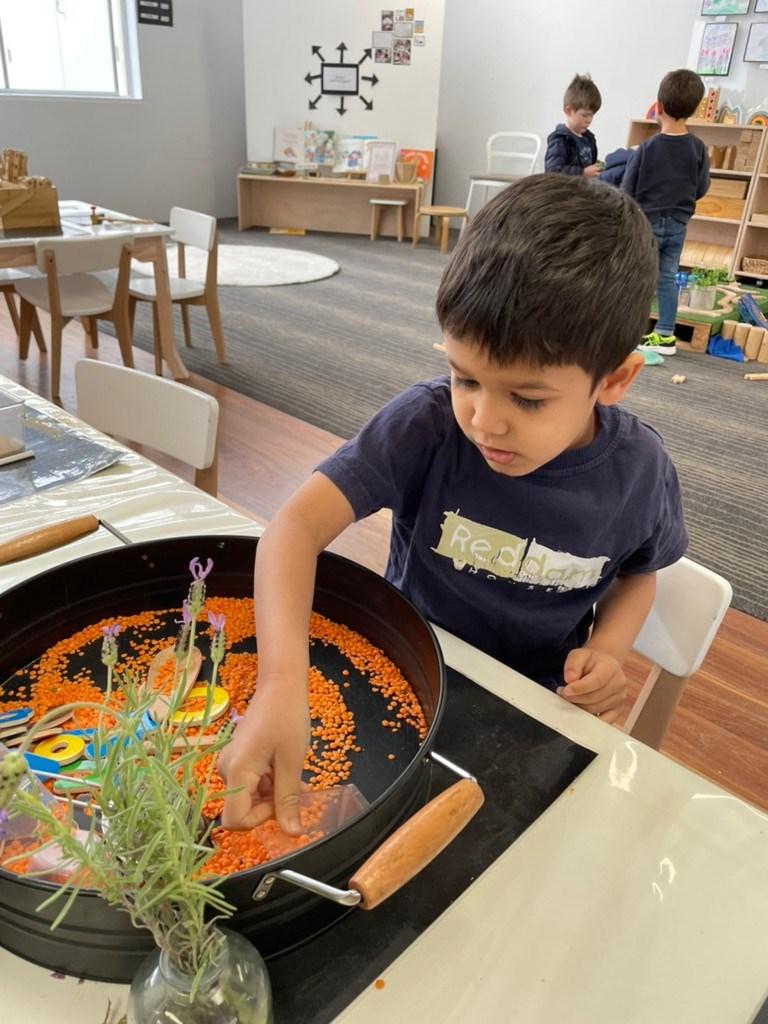
At the play dough table the children were provided with knives to explore fractions as they cut the play dough into pieces. The water trays were filled with a variety of different sized containers and measuring cups to explore volume and capacity
Wishing all our families a lovely weekend
4R Team Stage 4R By Hazel Whybrow

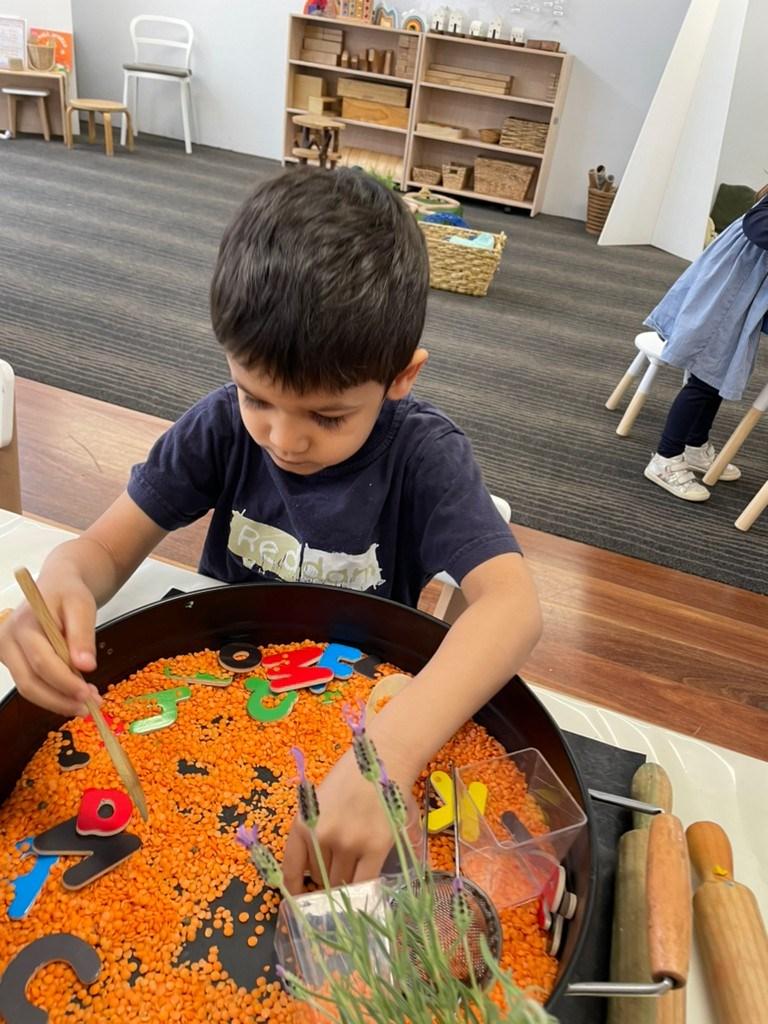
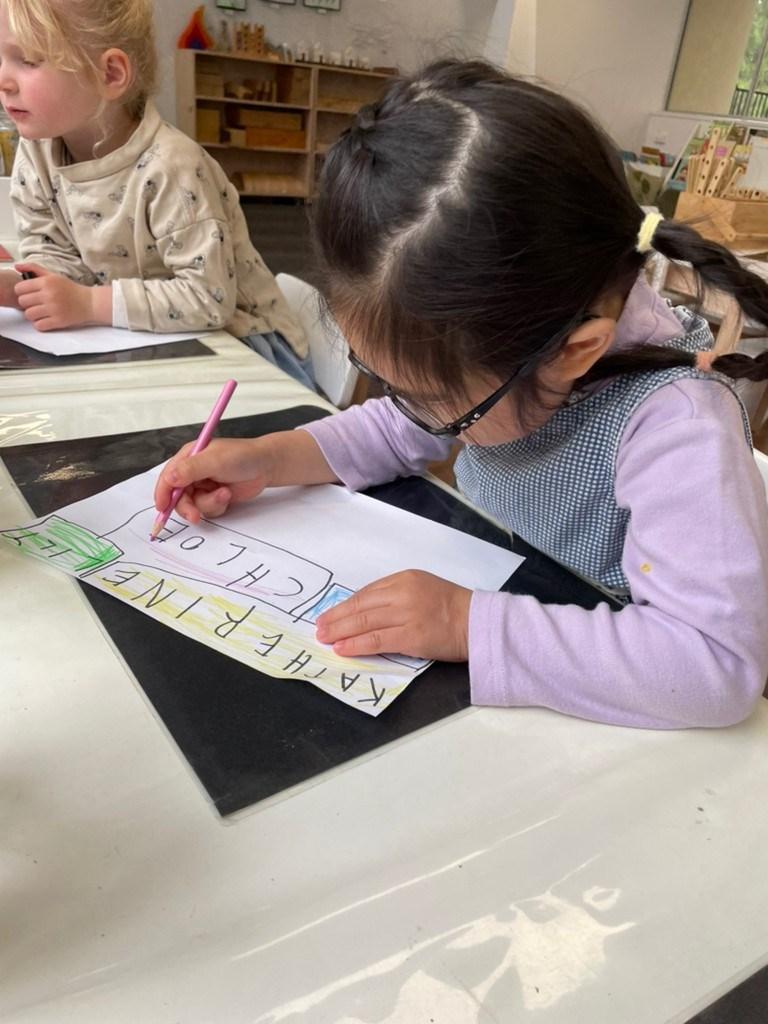

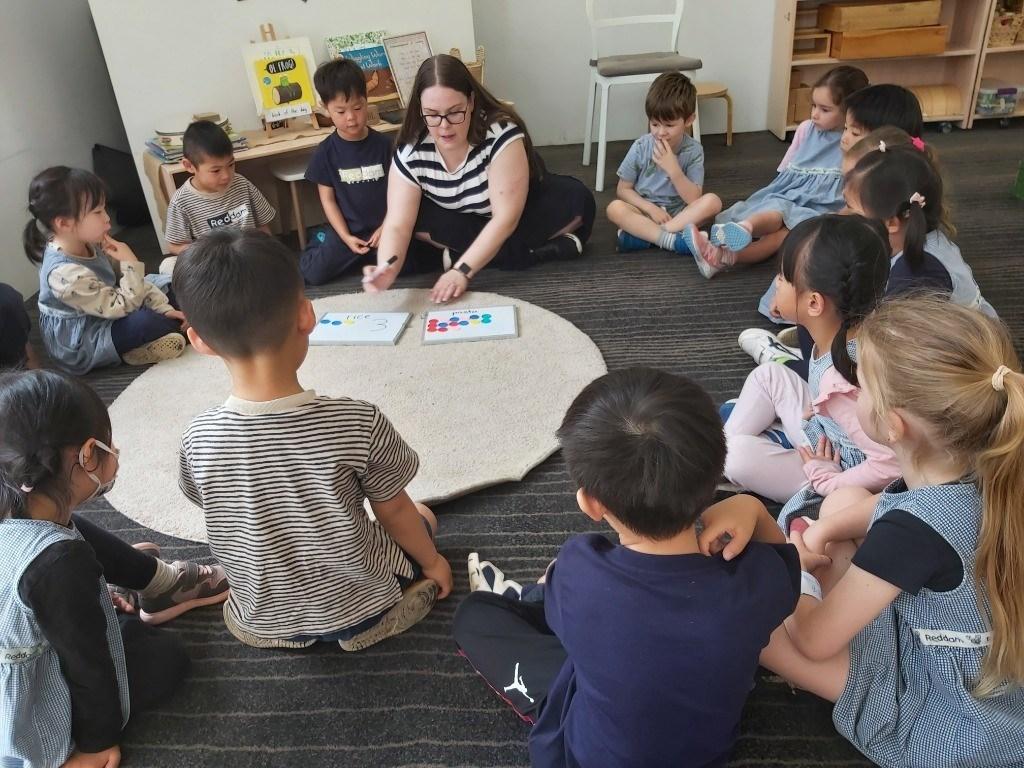

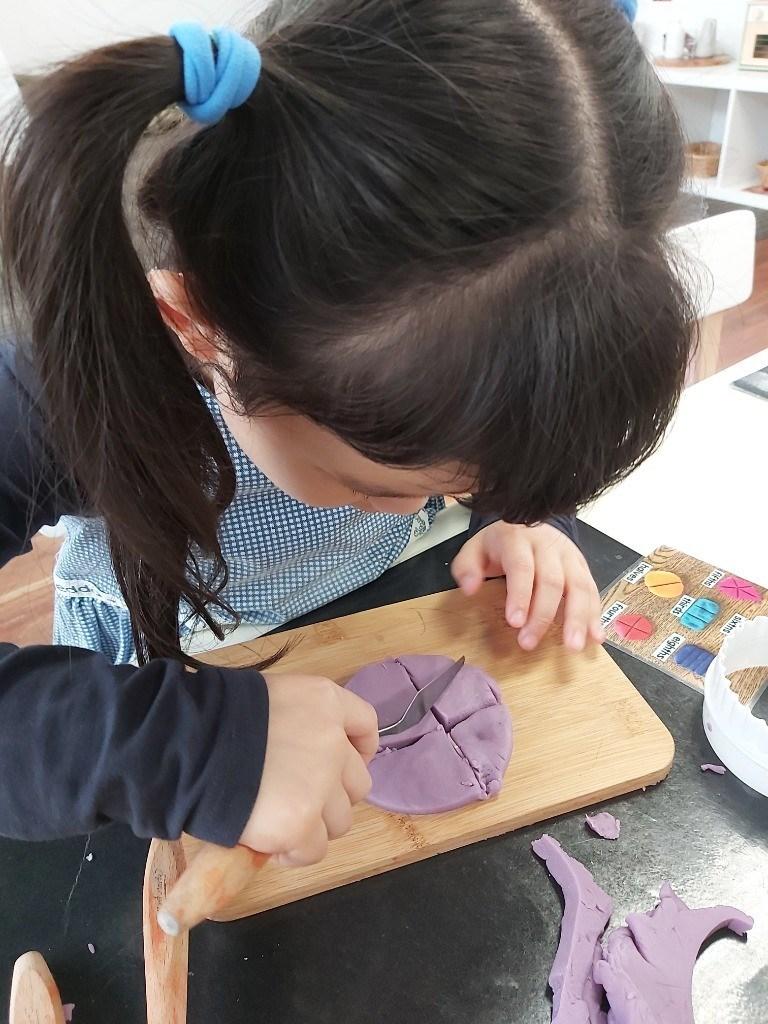
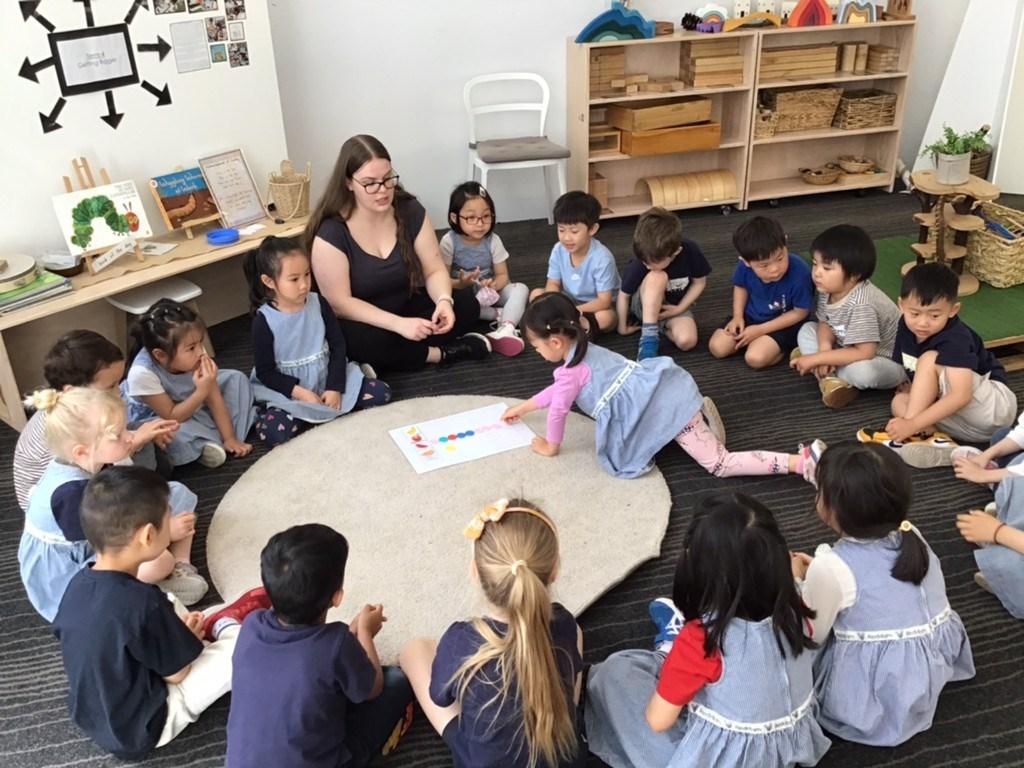
22 Stage 4R:

23 Stage 4R:
Our classroom was filled with sunshine and flowers as we focused on what it means to feel HAPPY like the yellow Colour Monster. Every learning experience represented happiness with bright and cheerful materials to manipulate and explore. Our story books were thoughtfully chosen to put a smile on the children's faces, including the story of the week, When I'm Feeling Happy by Trace Moroney. We read about Bunny and what he does to feel happy every day. He played nicely with his friends, he baked cookies with his grandma and he loved camping with his dad. When he was happy, he noticed that everyone around him was happy too. We discussed how it's always nice to be surrounded by happy and positive people because it lifts our spirits. When we smile and share our positive vibes, we spread happiness everywhere we go.
The children were asked, "What makes you happy?"
"When I pick flowers." Angus
"Looking for lizards." Mason
“When I go walking with Dad.” Jessie
"When I go to the library to get books." Ishaan "Playing with Lego." Leonardo "Butterflies." Ruby
"When I go to the zoo and see elephants with trunks that spray water." Marcus
One of the children’s favourite stories was called The Jar of Happiness by Ailsa Burrows. The little girl in the story filled her jar with the things that made her happy and carried it everywhere she went. The children shared what they would put into their jar of happiness including sunshine, seashells, flowers, glitter, jewellery, chocolate and lollies. Throughout the week the children were invited to fill their own jars, scooping sparkly gemstones and sequins into them. At our learning tables, the children loved exploring the variety of yellow 'happy experiences'. They manipulated kinetic sand with sunflowers and gemstones, rolled and moulded yellow play dough to make flowers, and shaped kinetic sand. At our art table, the children took inspiration from our yellow illustrations in The Colour Monster book, using markers, pencils, paints and cellophane.

Our fairy tale of the week was Jack and the Beanstalk, where we read about how the little boy exchanged the family cow for some magic beans at the market. The children were confused with how to feel about Jack taking the gold from the giant, however we decided that he must have been very poor and desperate. Throughout the week, the children acted out the fairy tale and assumed each of the characters. We focused on the emotions that each of the characters were feeling, different inflections when each line was said. It was lovely to see how confident the children were when performing.
Next week the children will be focusing on what it means to feel sad, lonely and disappointed. We will continue to observe the changes to our miniature beanstalk plants and document their progress.
Thank you for a wonderful week of learning!
24
“In this world there is nothing so beautiful as a happy child.” (L. Frank Baum)
Stage 4E By Lauren Hall
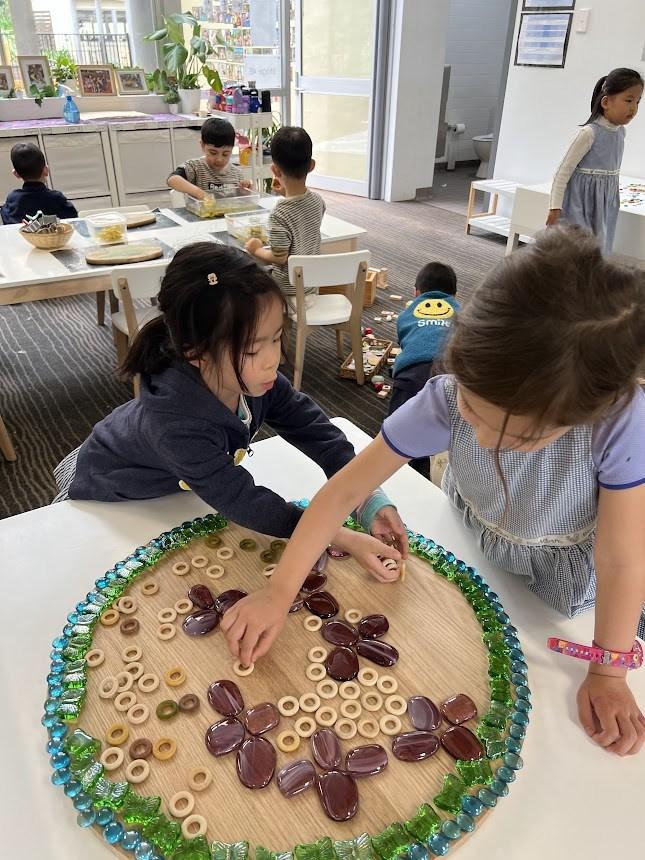
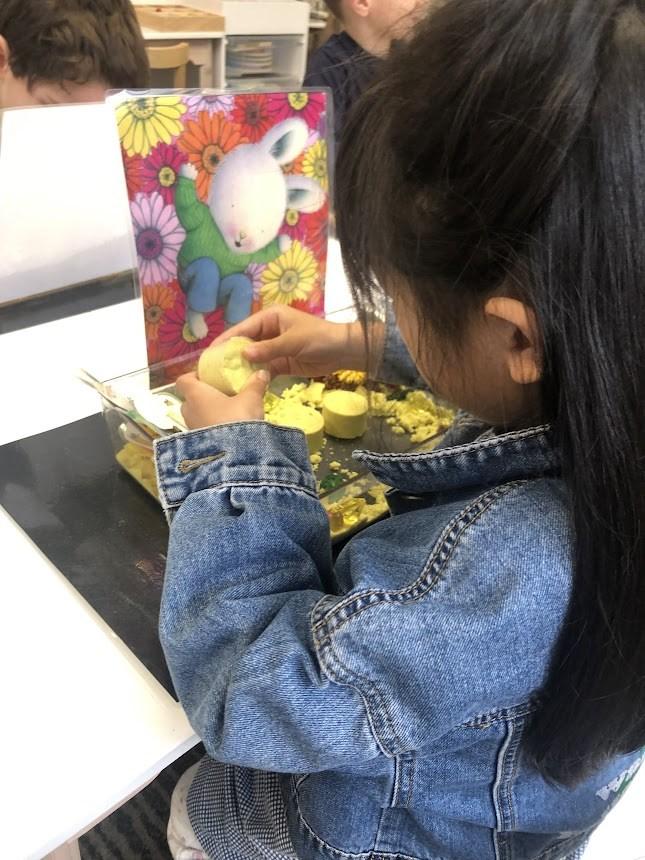
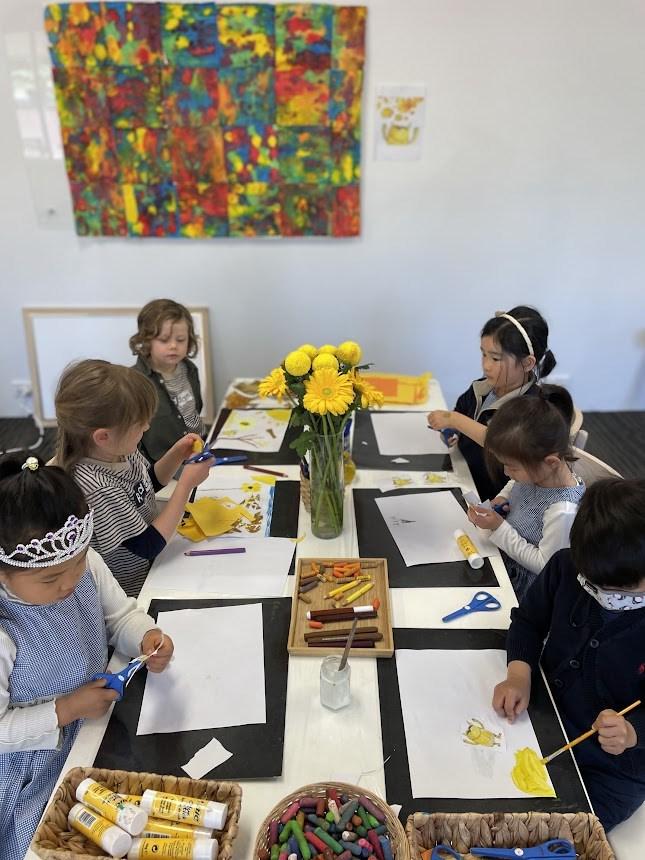

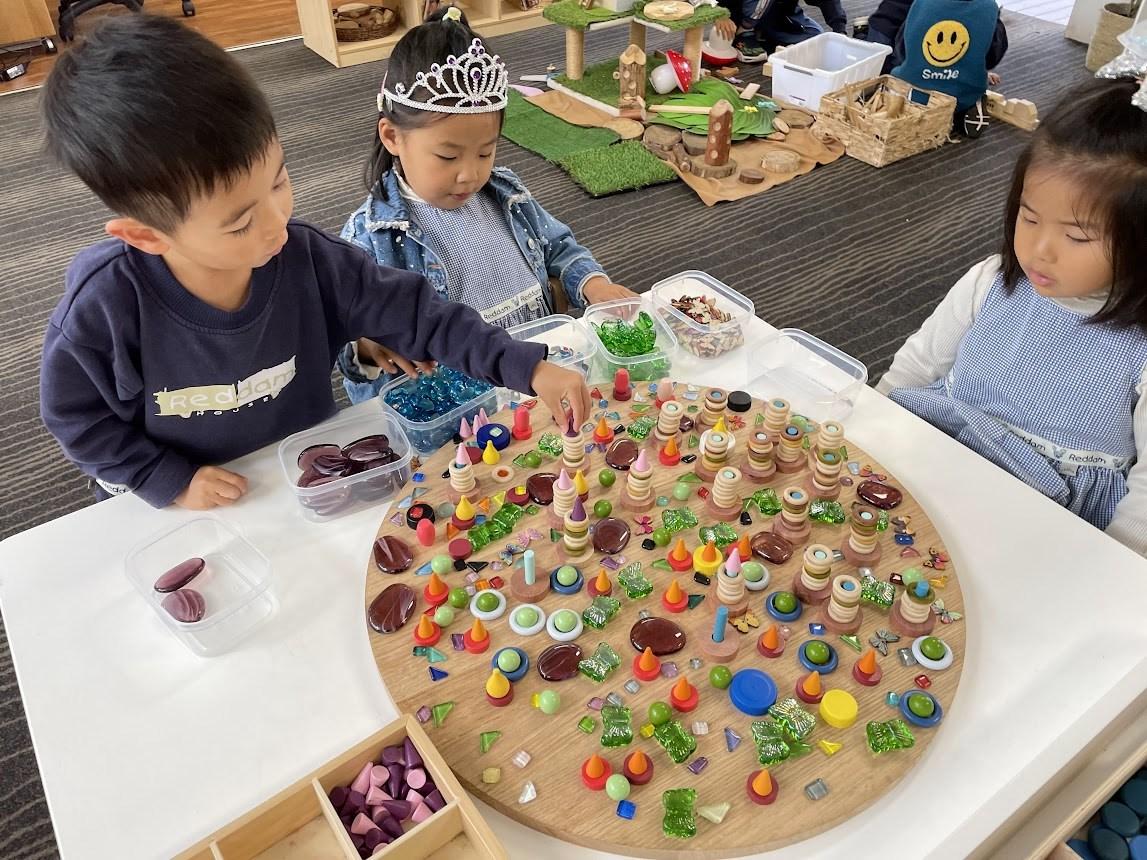
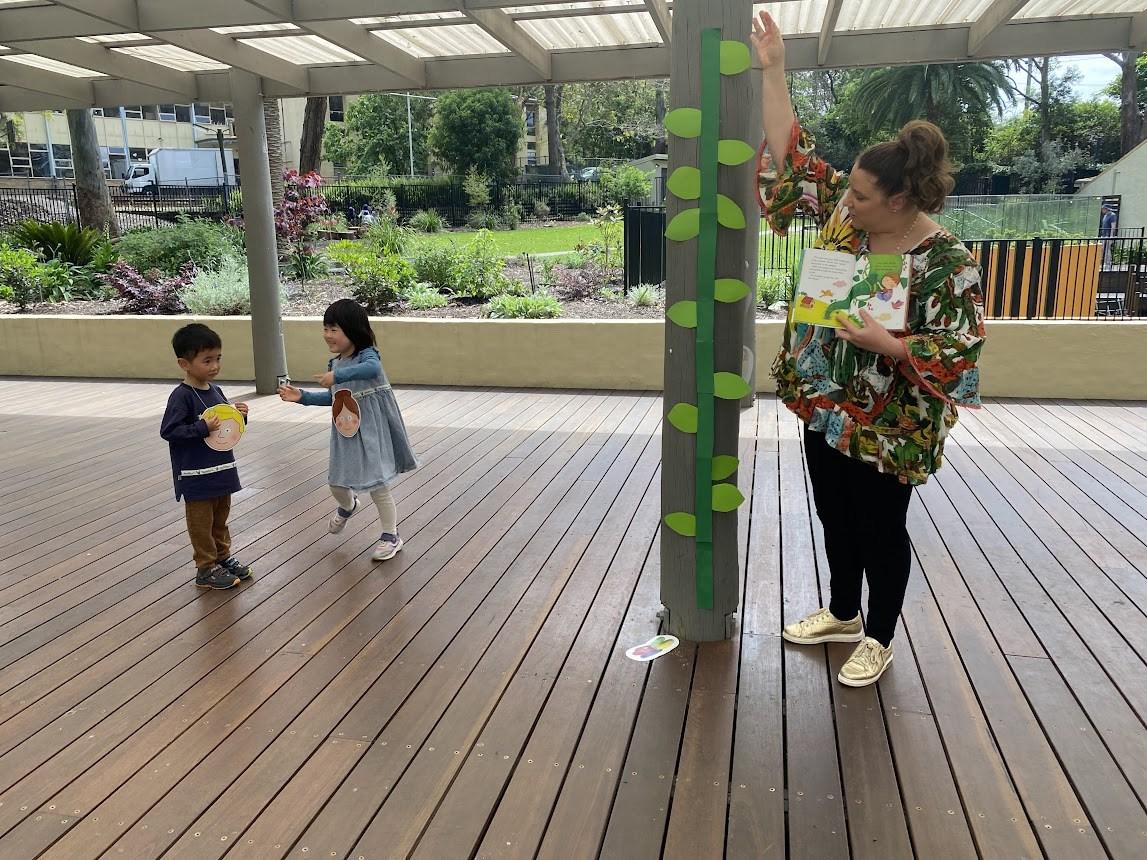
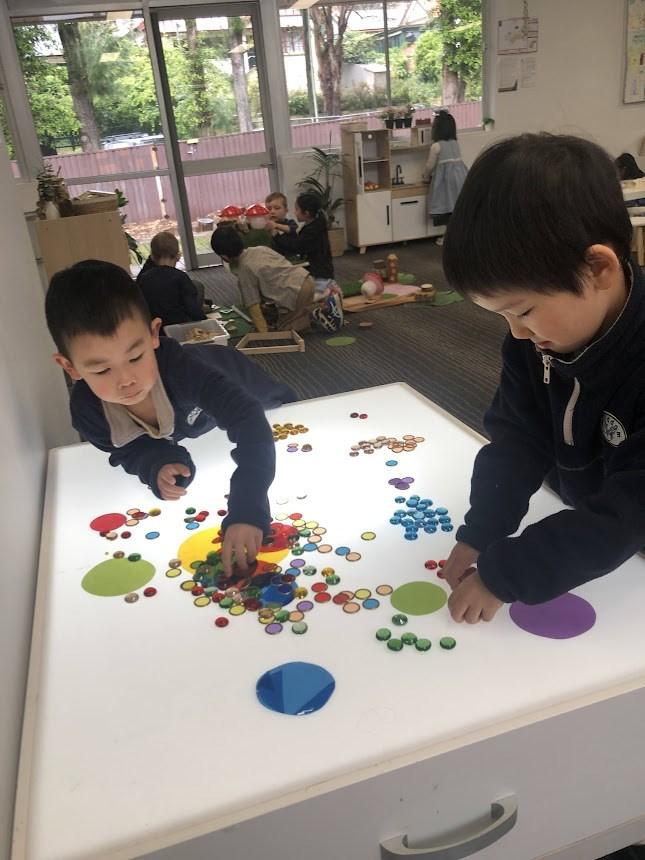
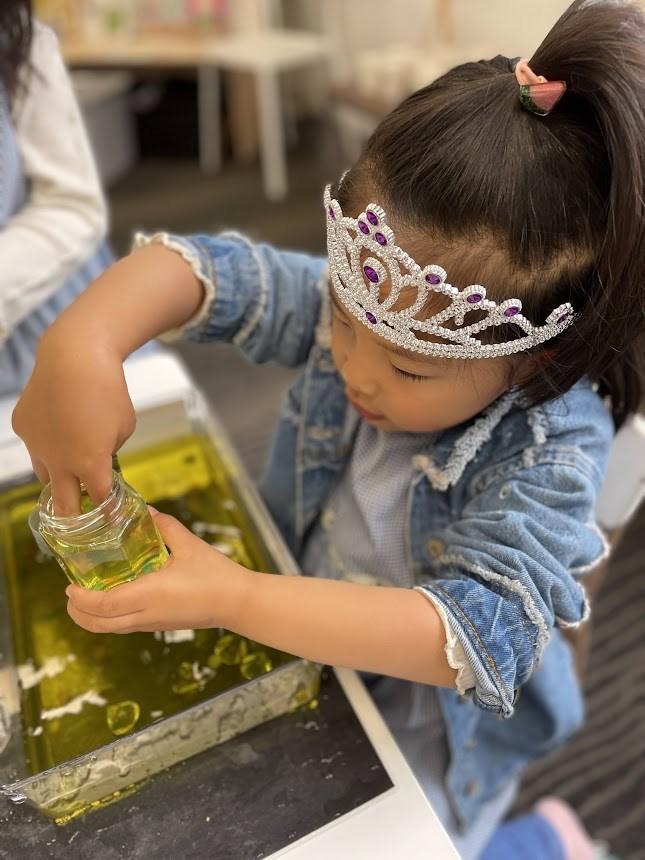
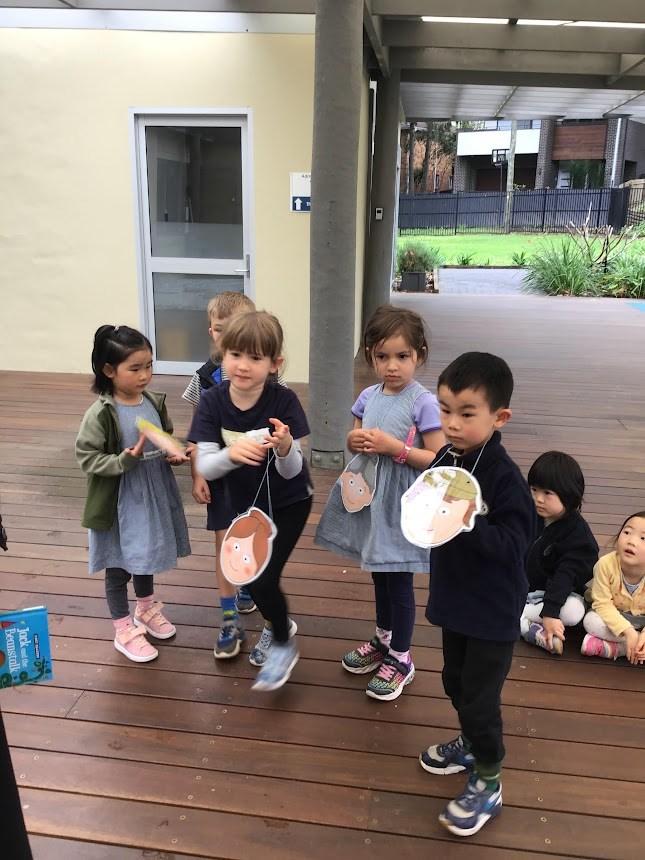
Stage 4E: 25
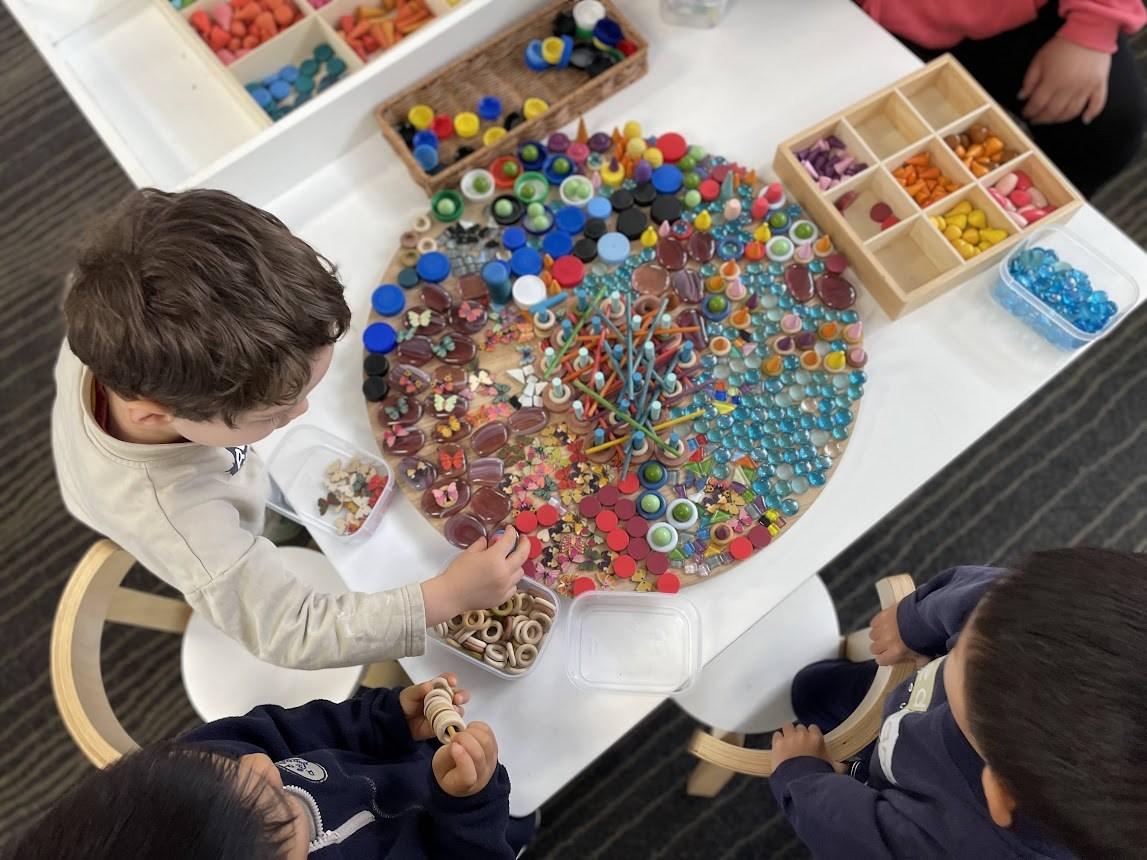
Stage 4E: 26
